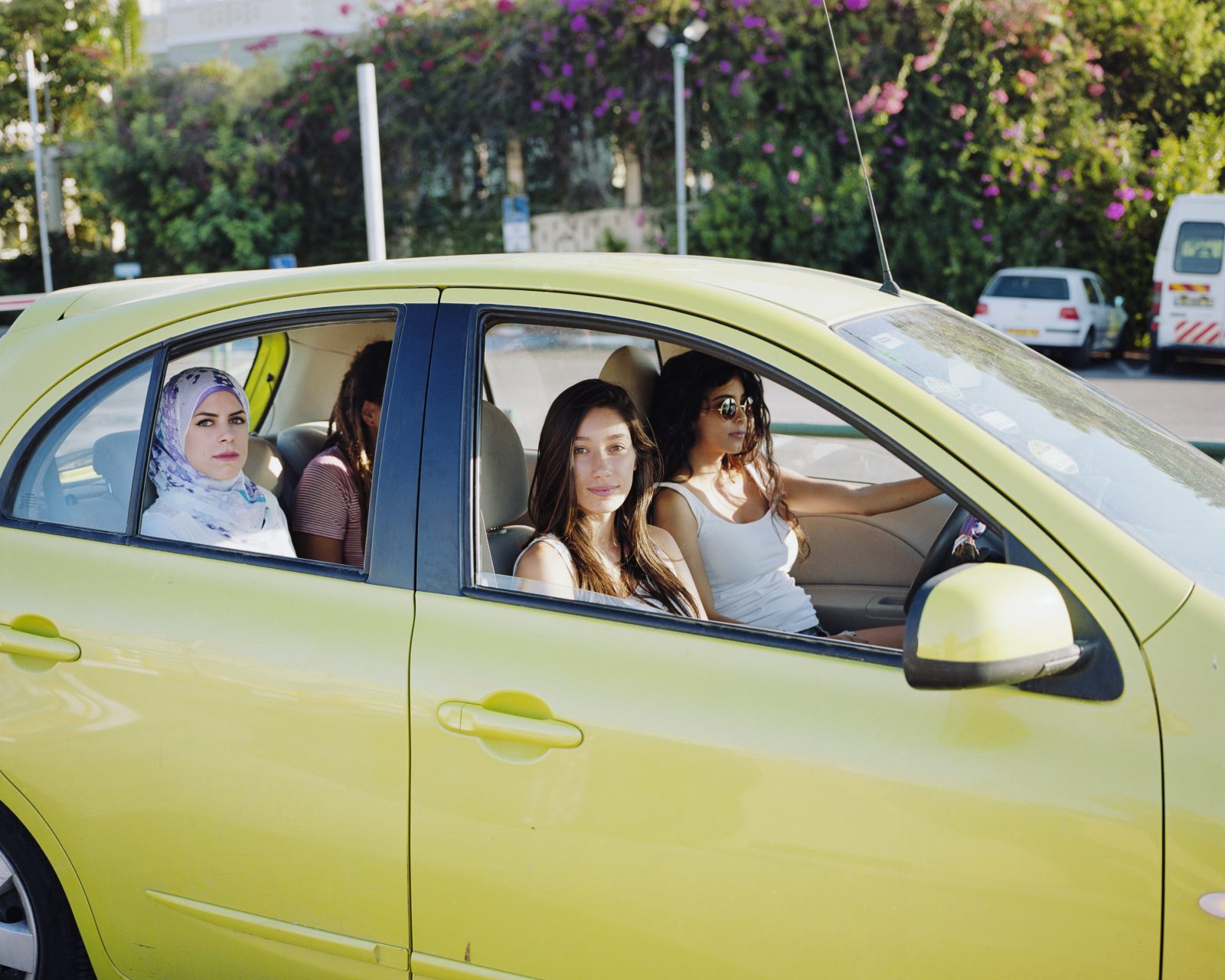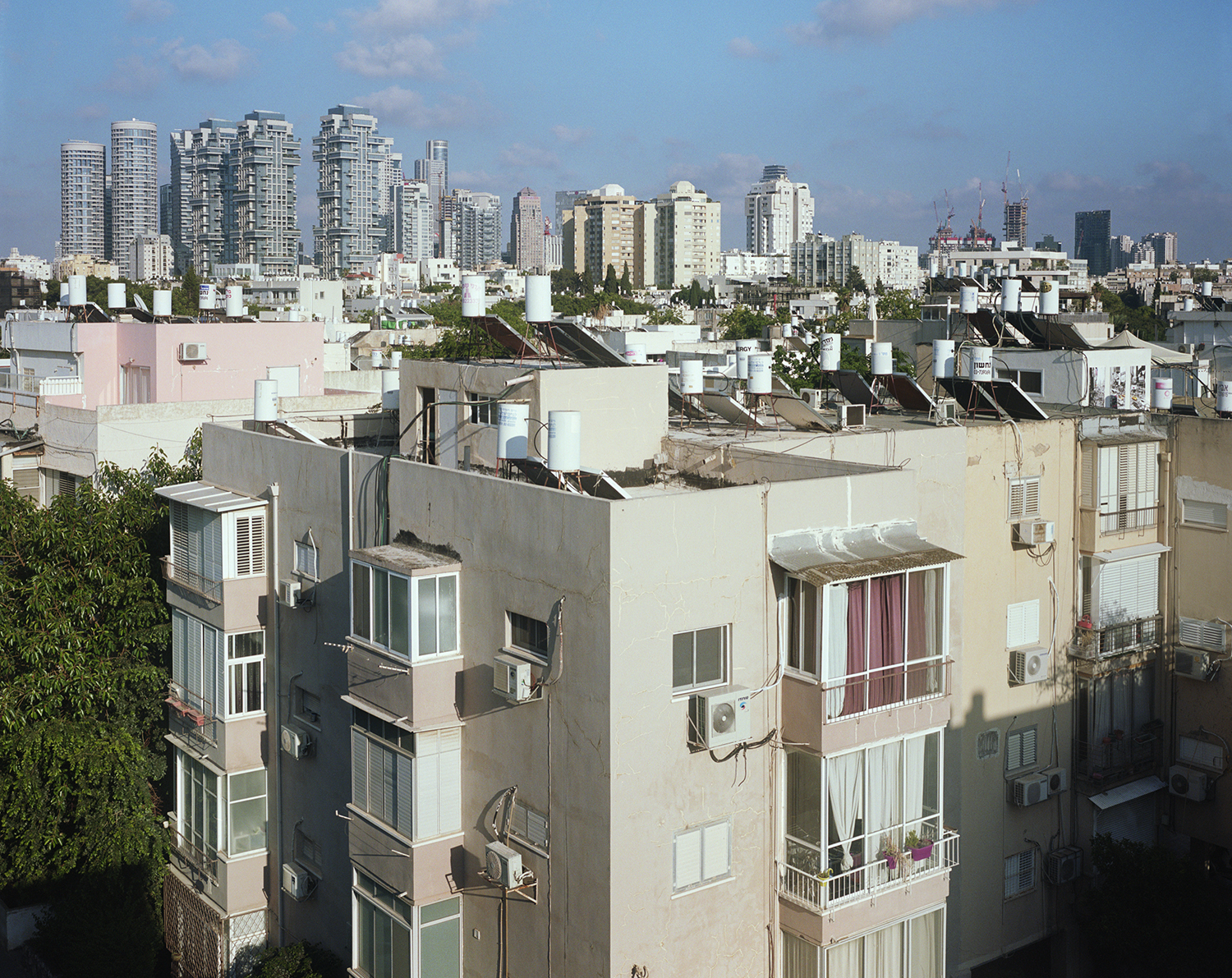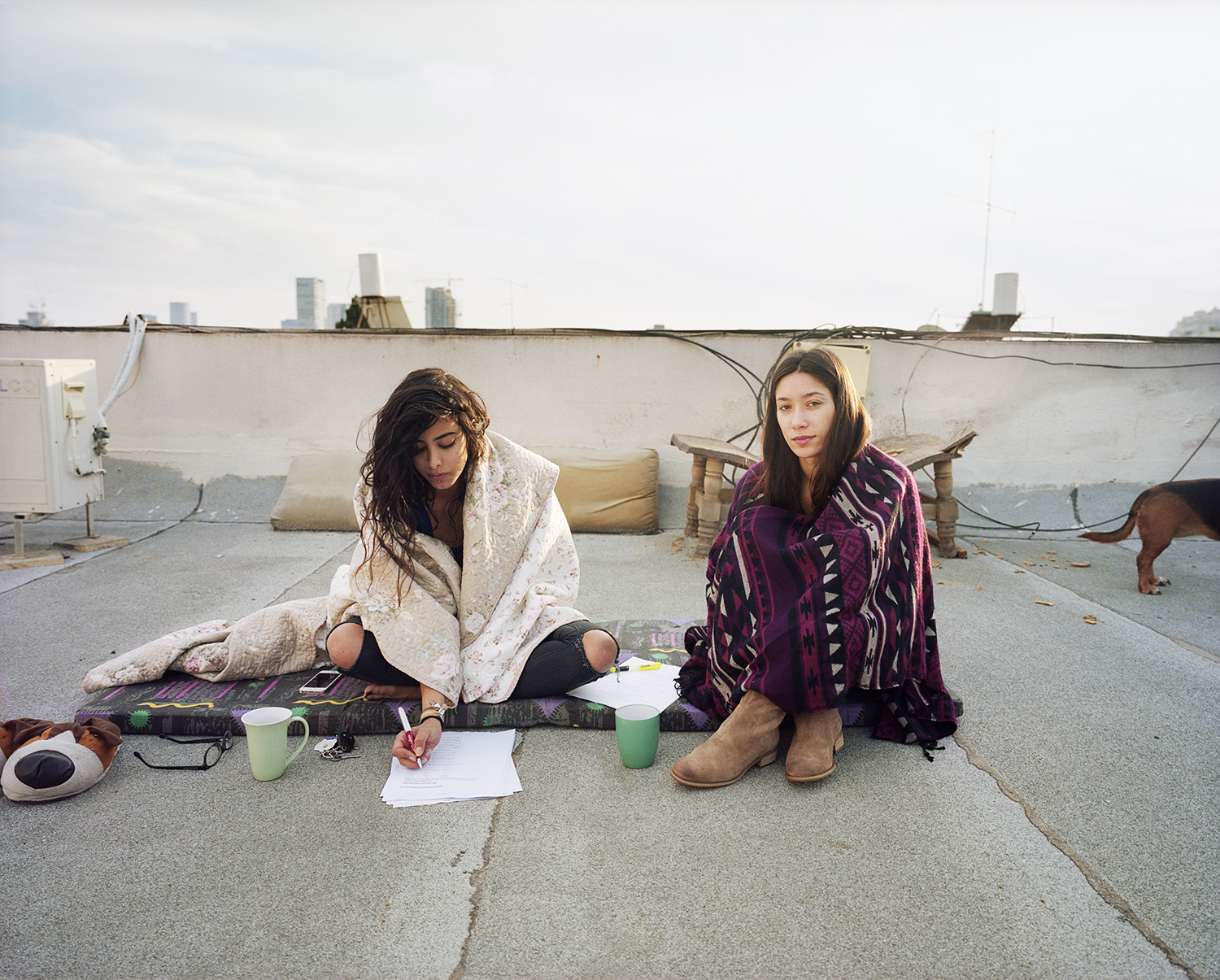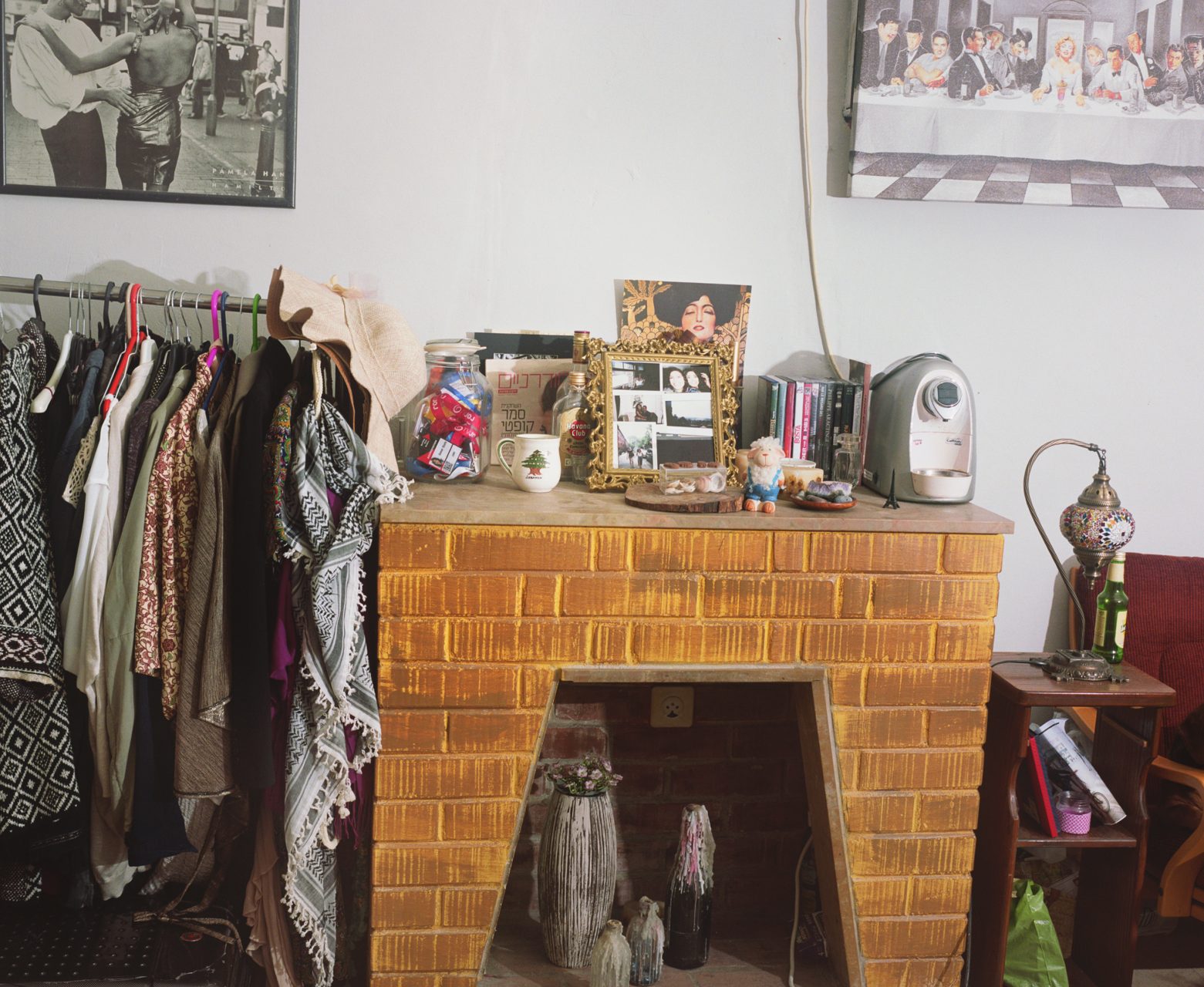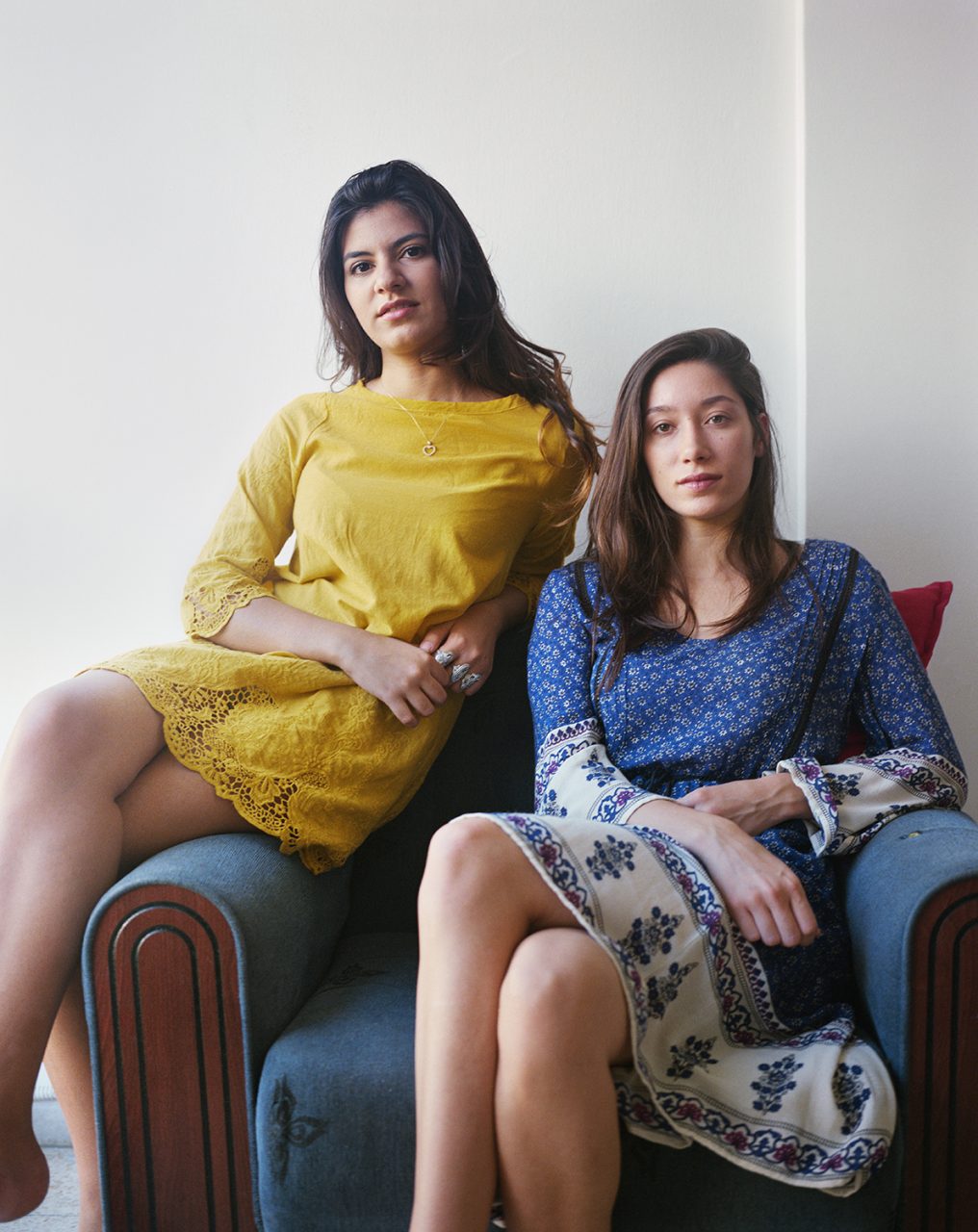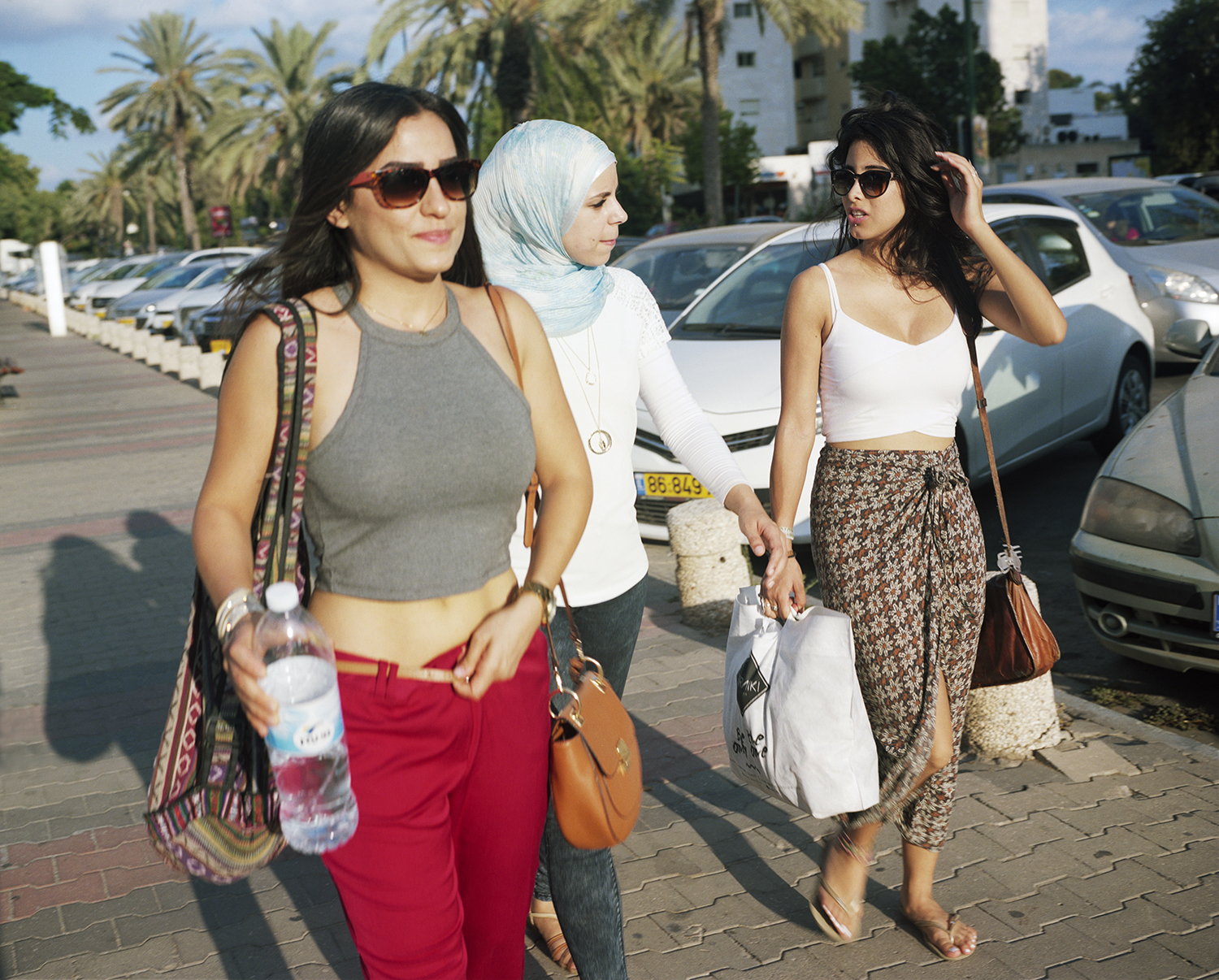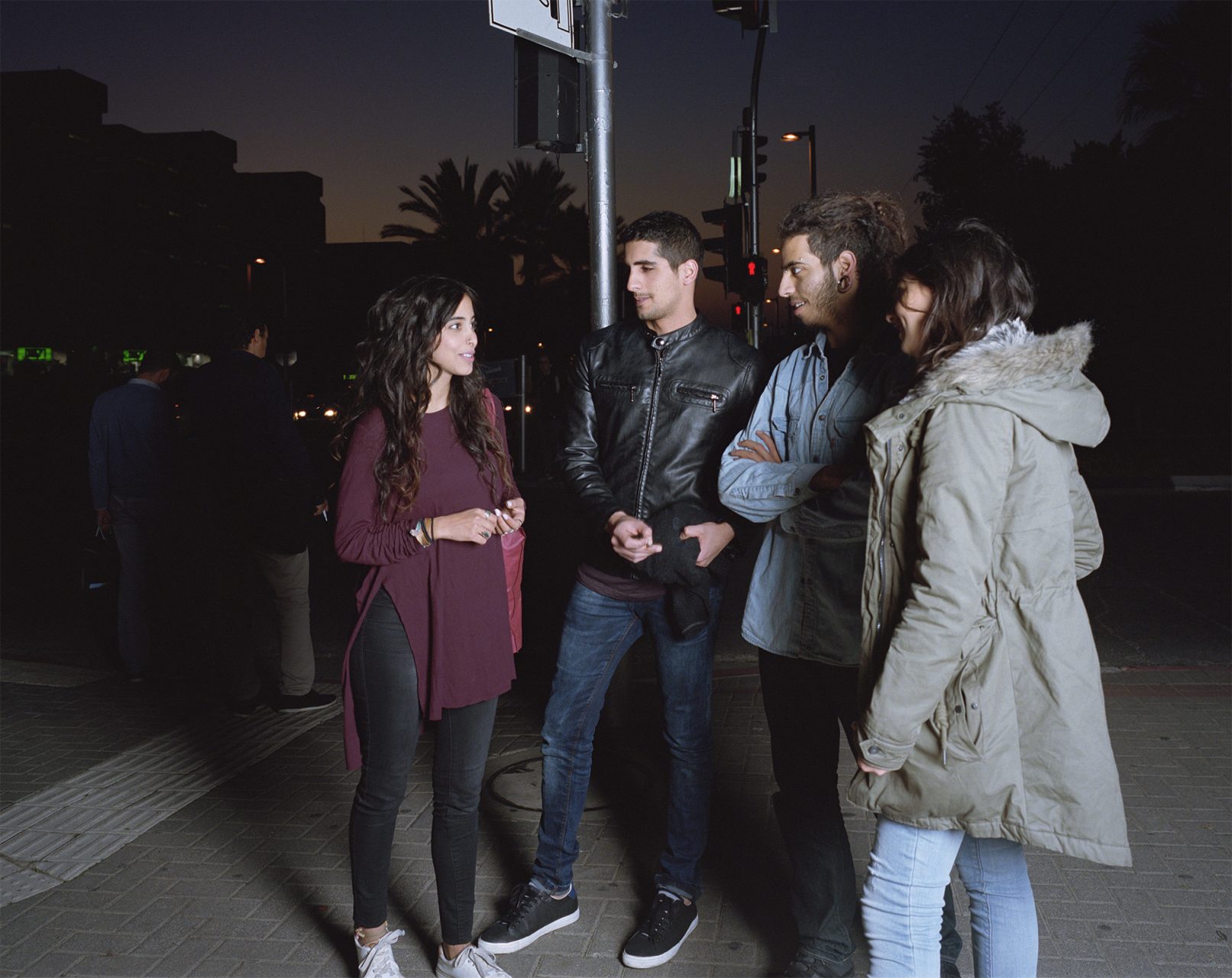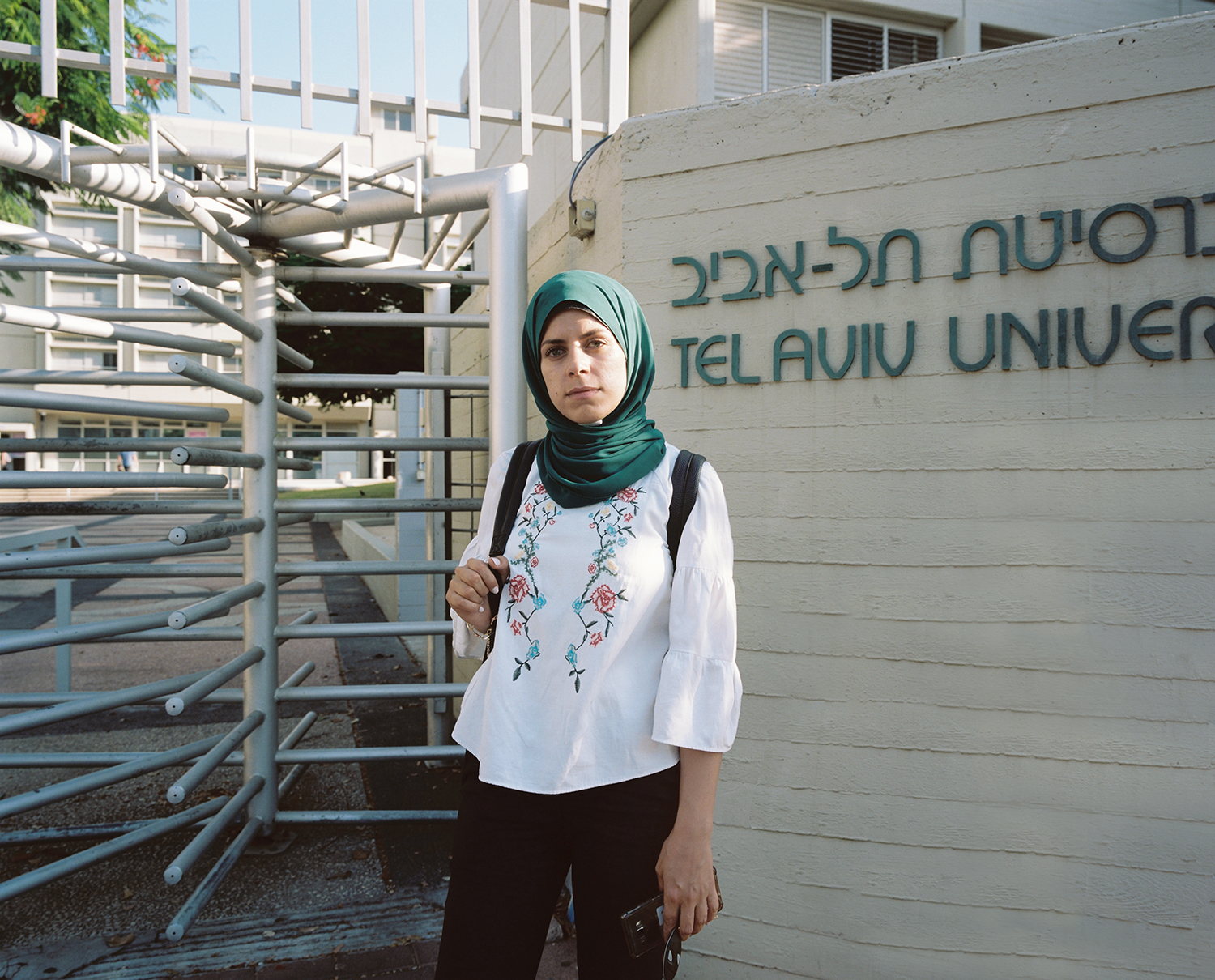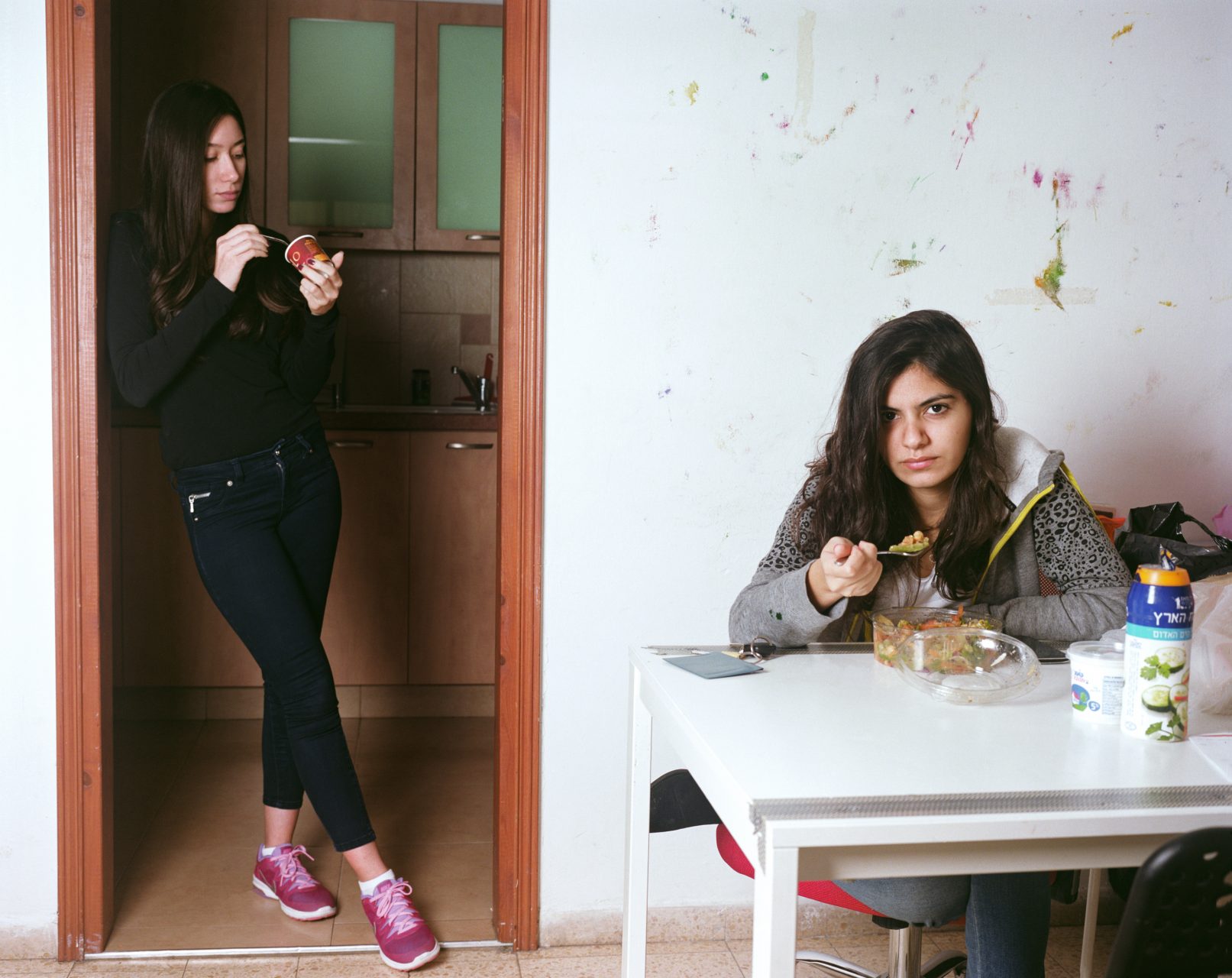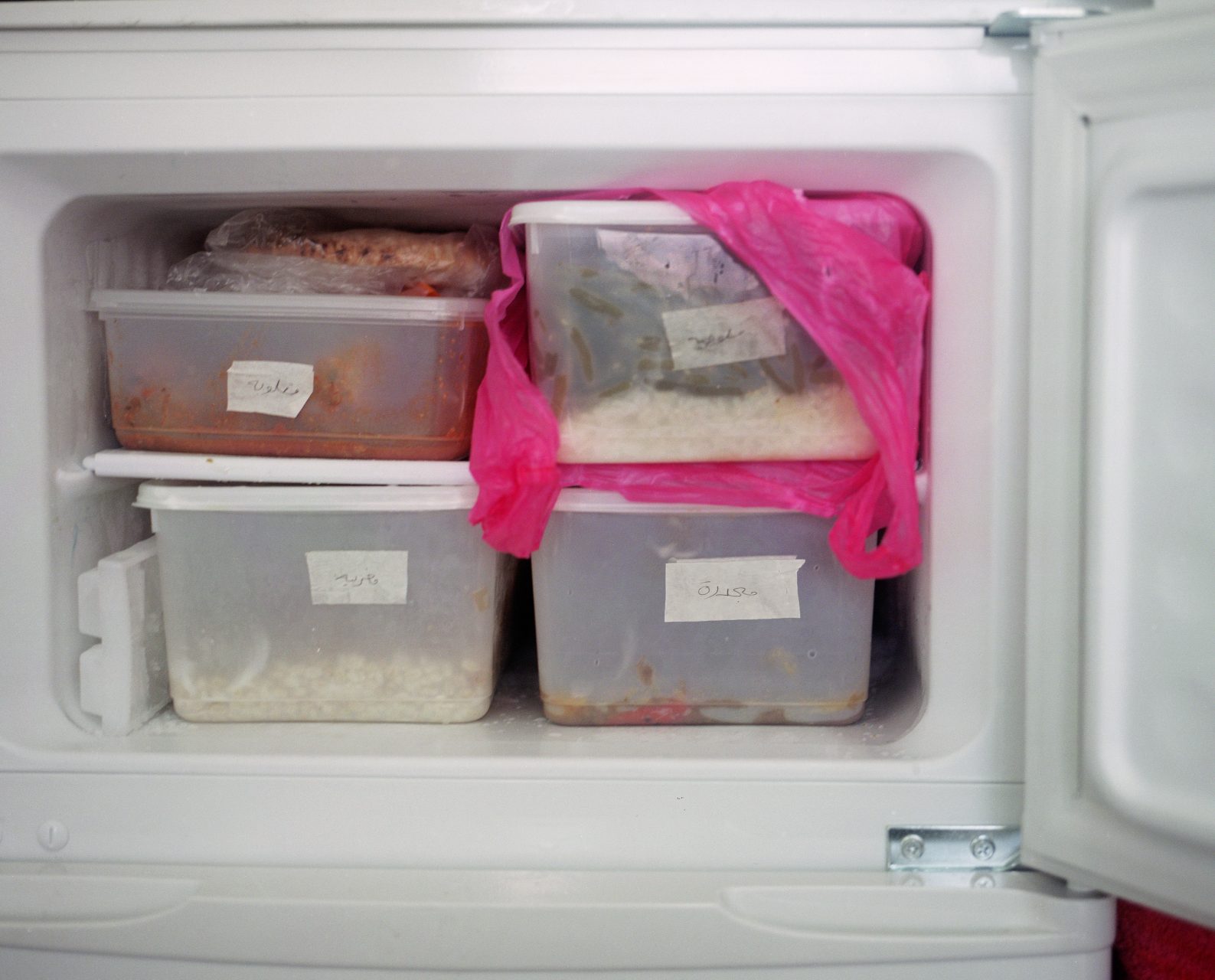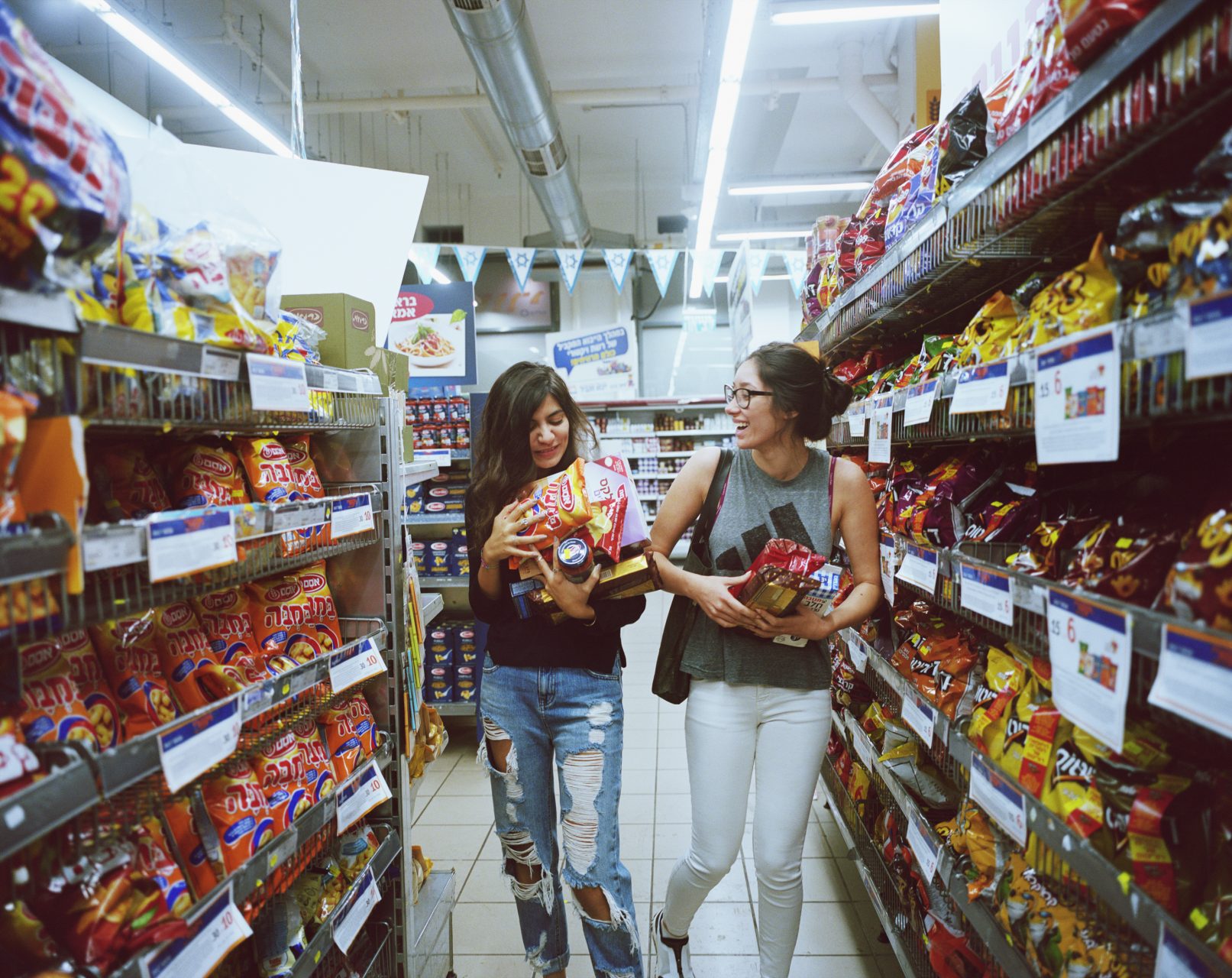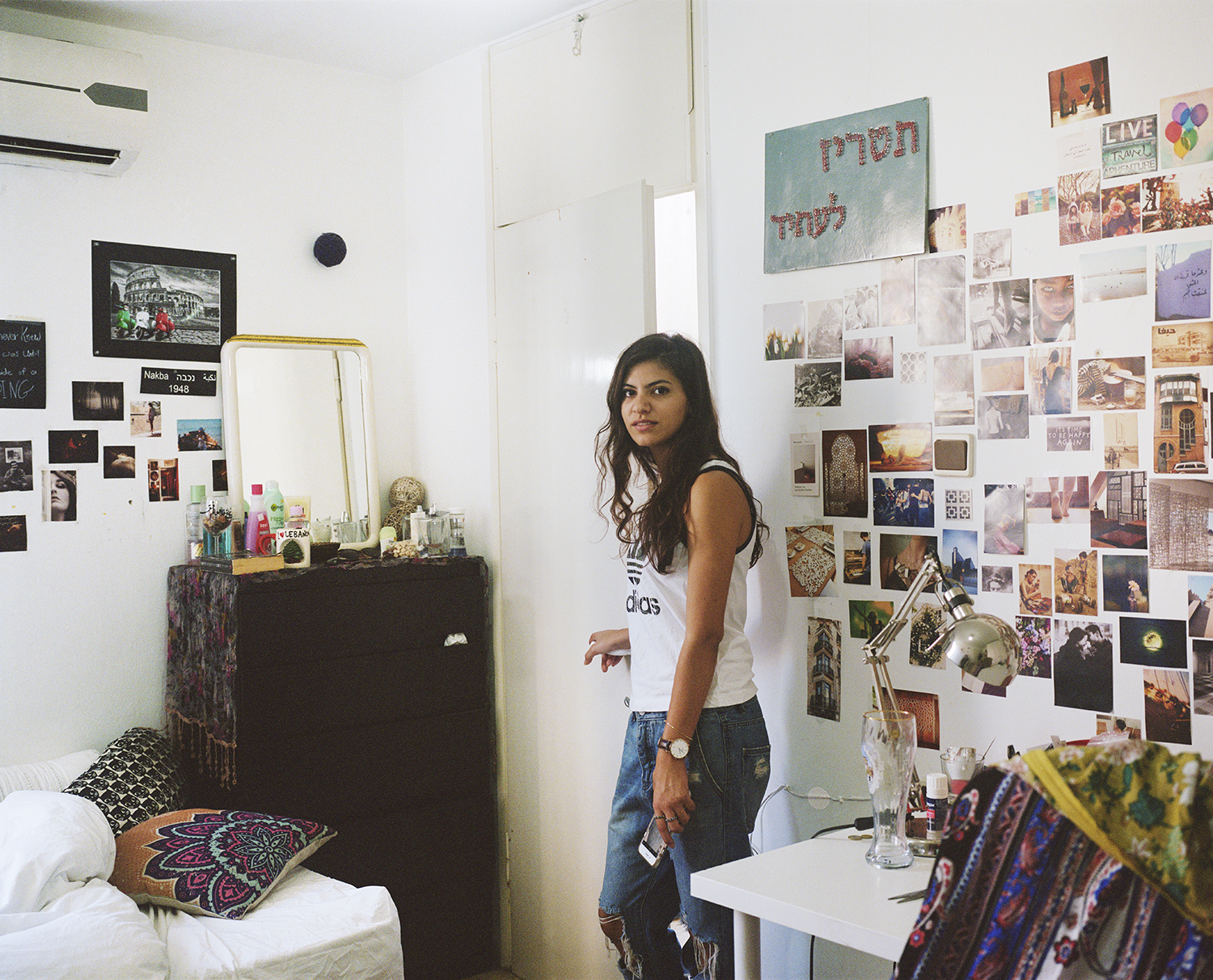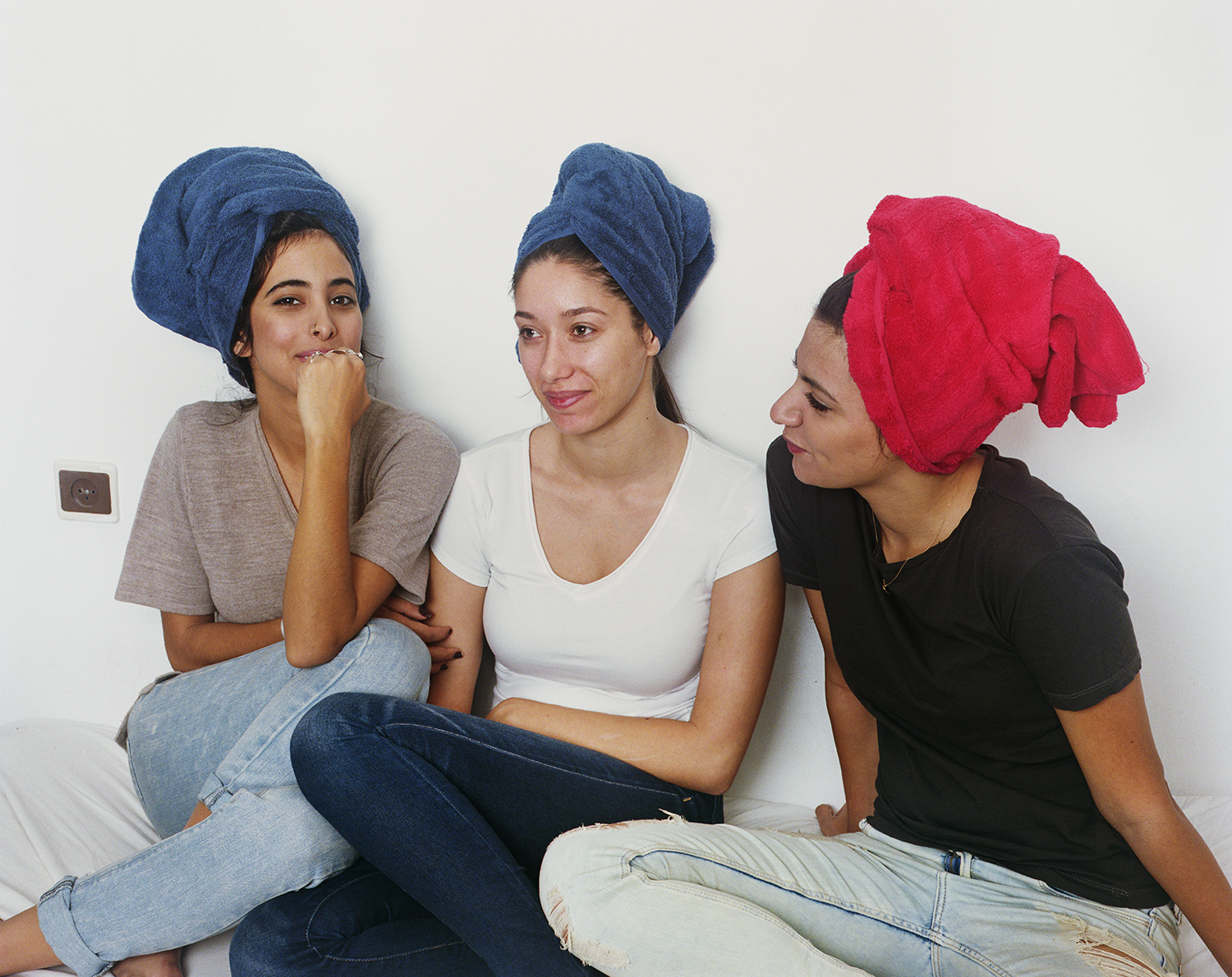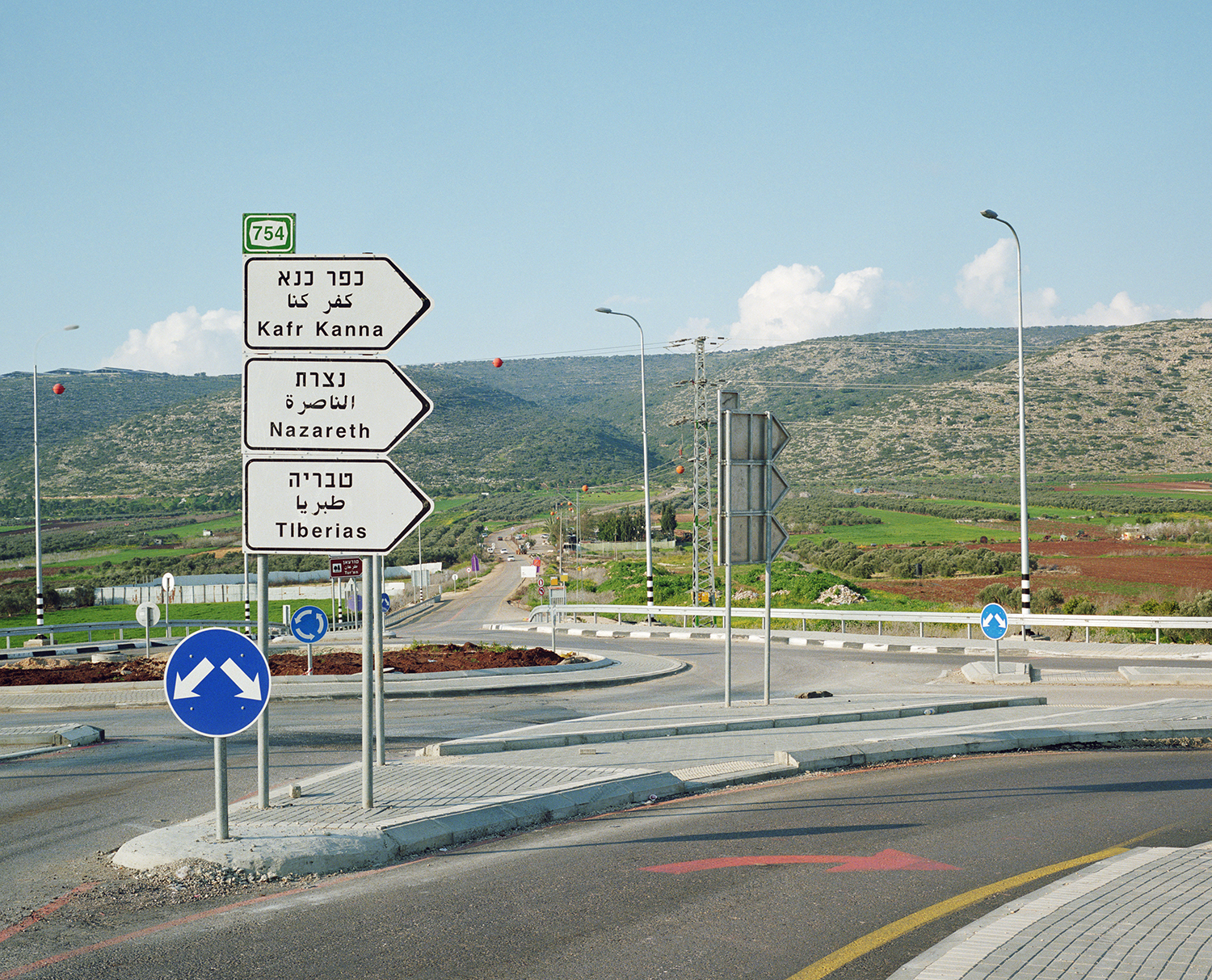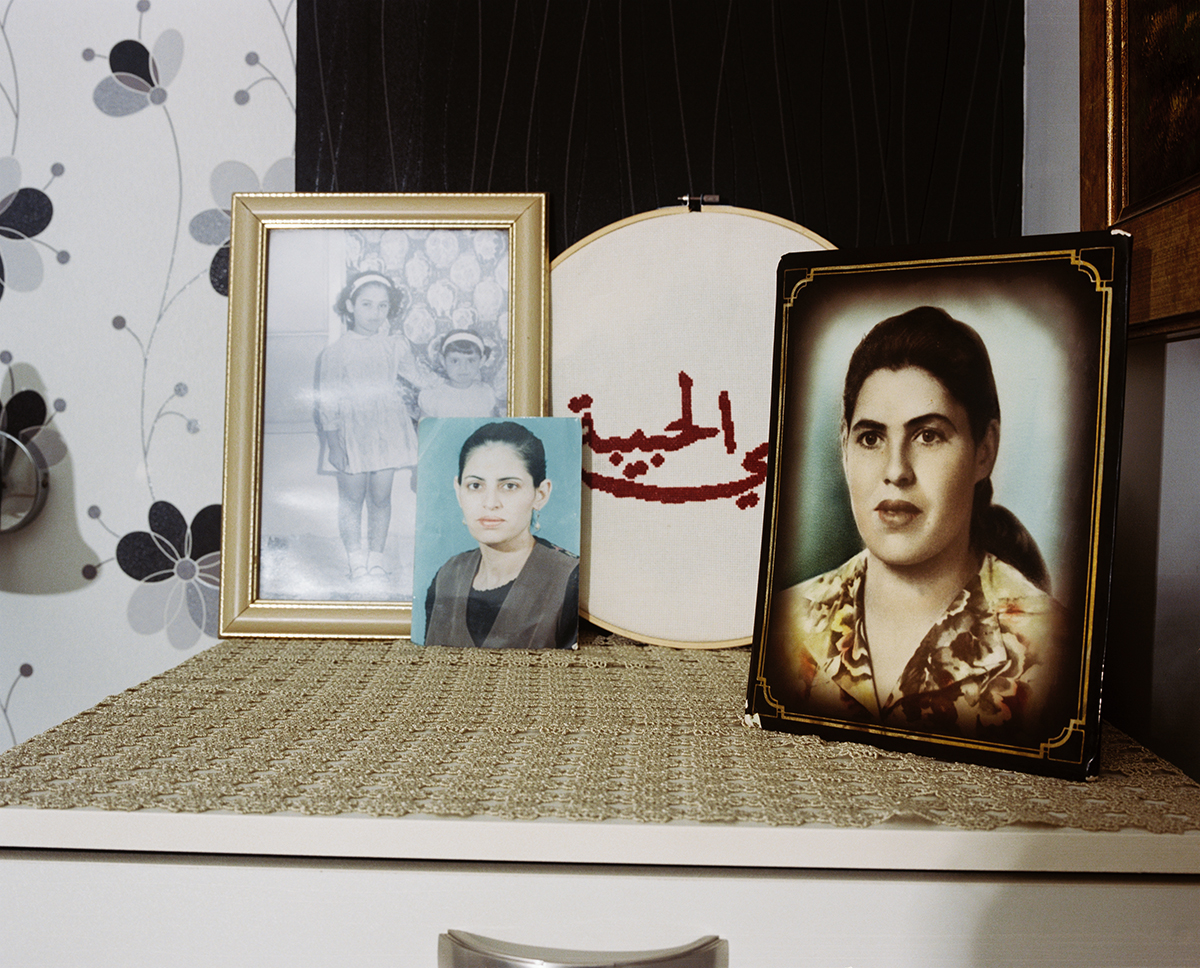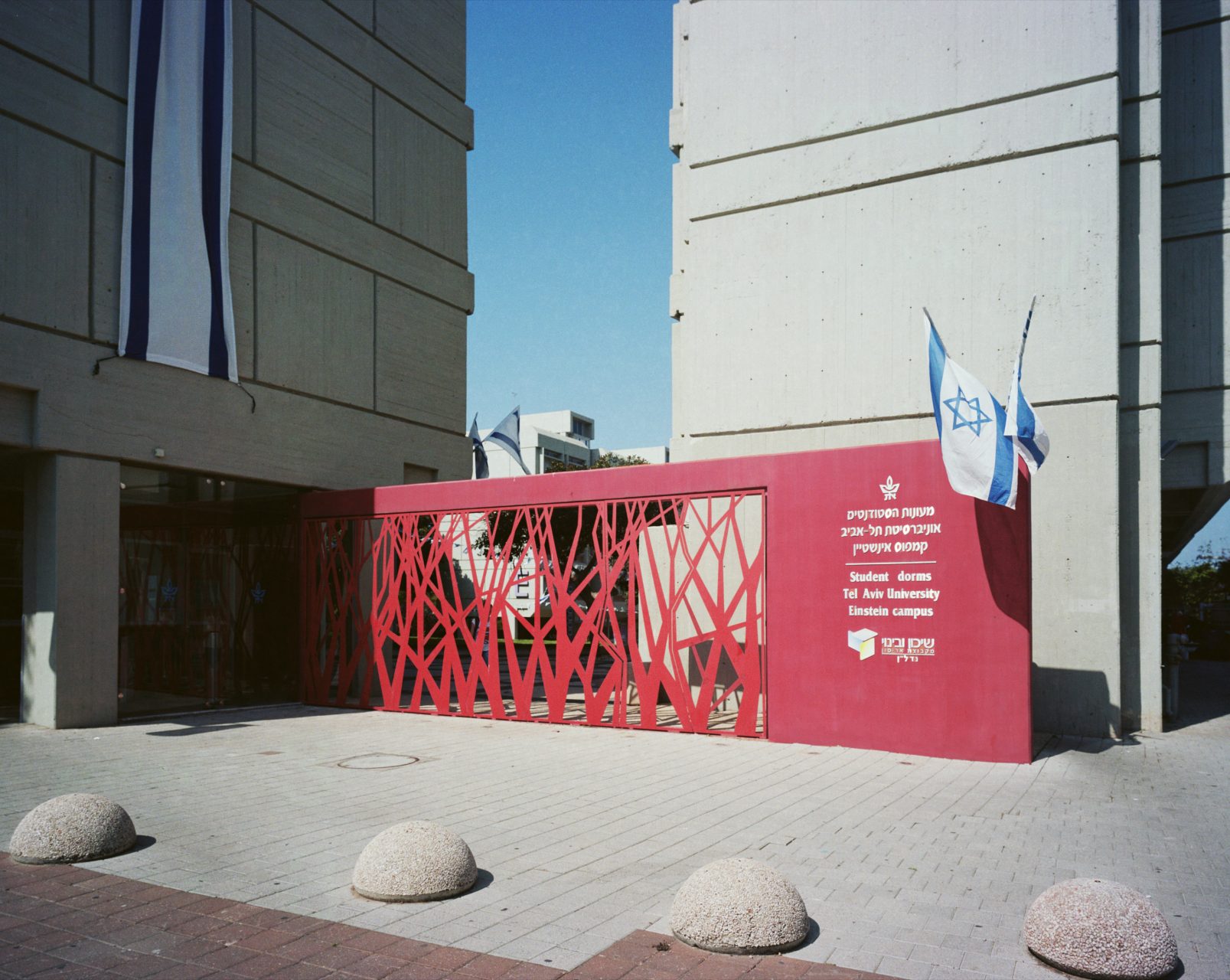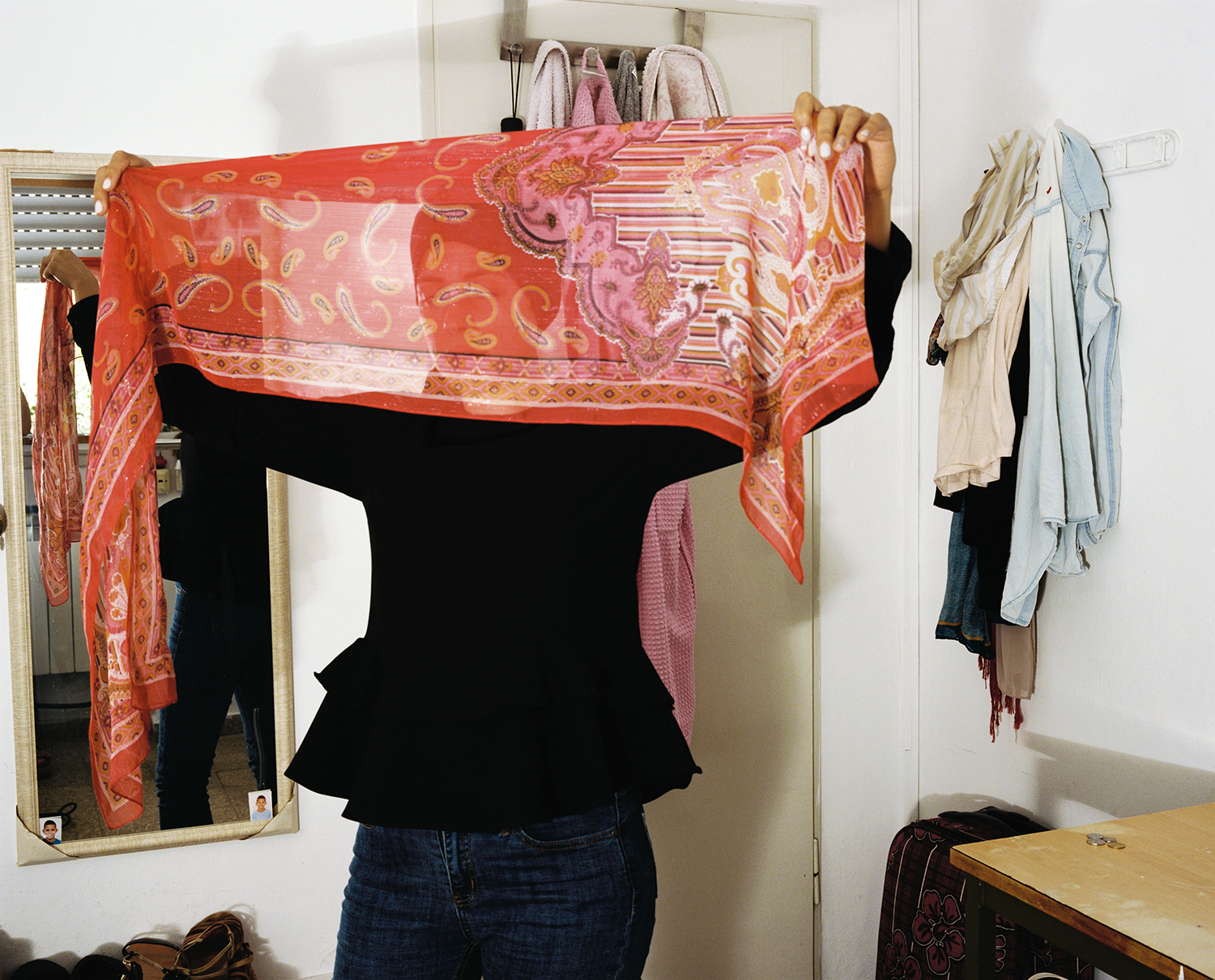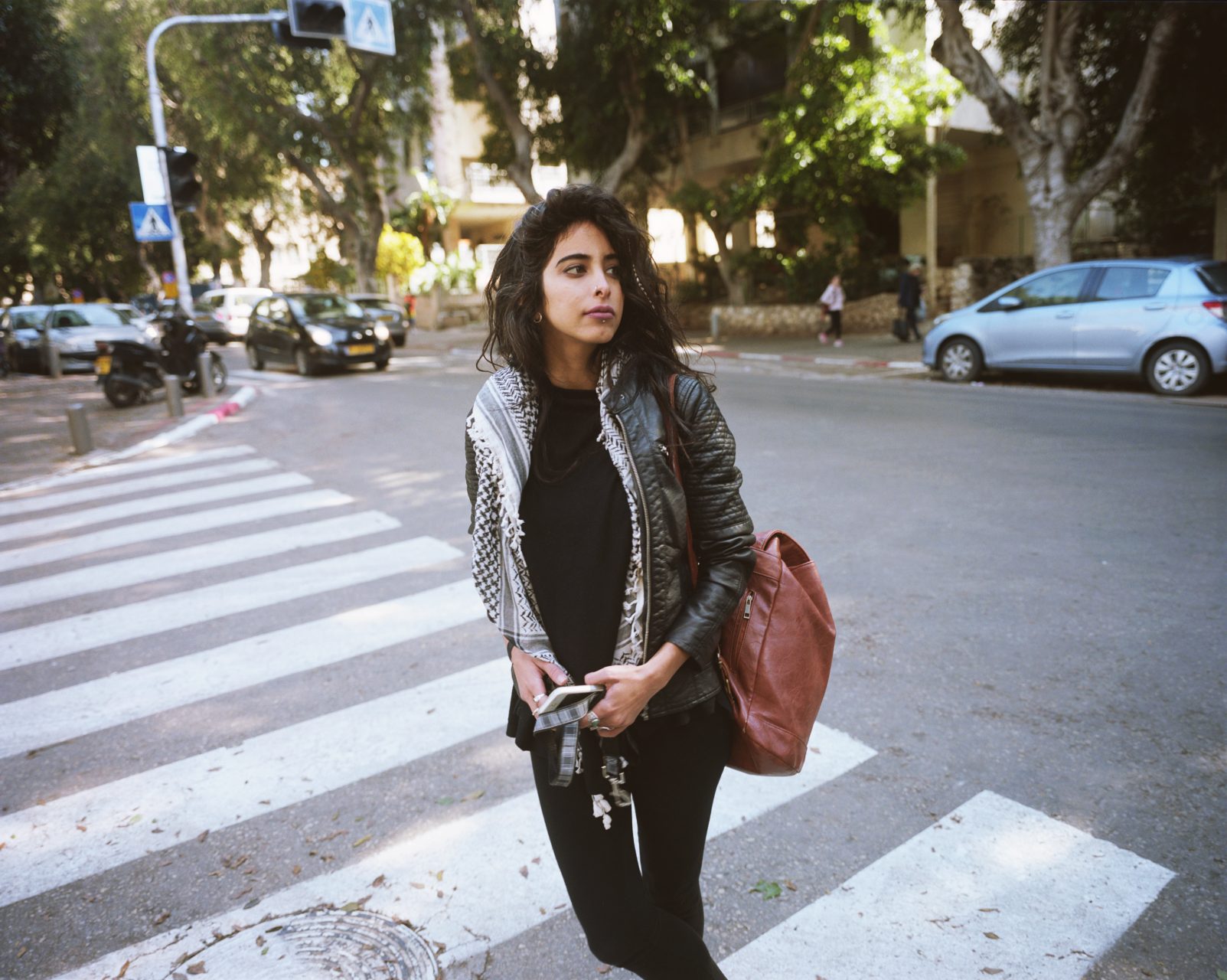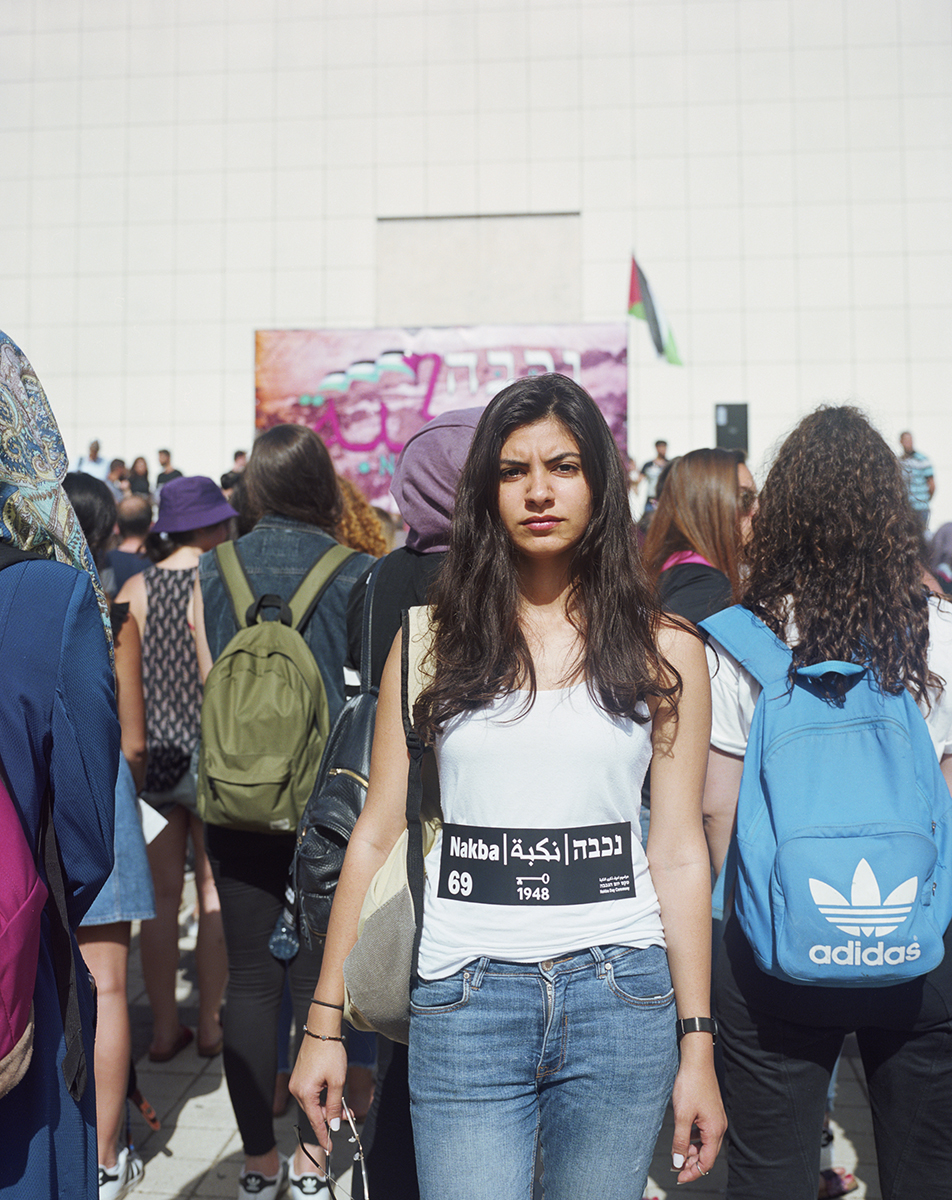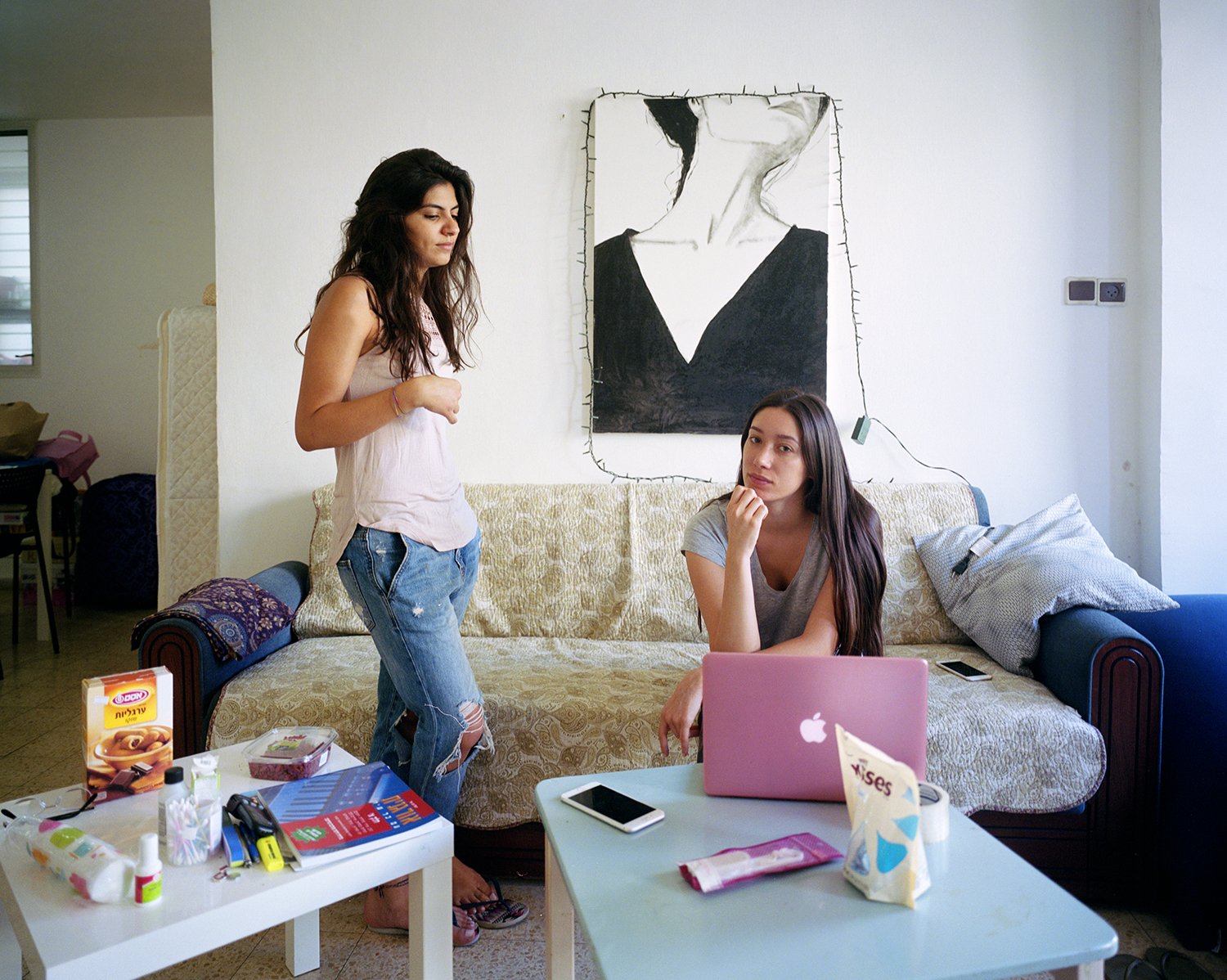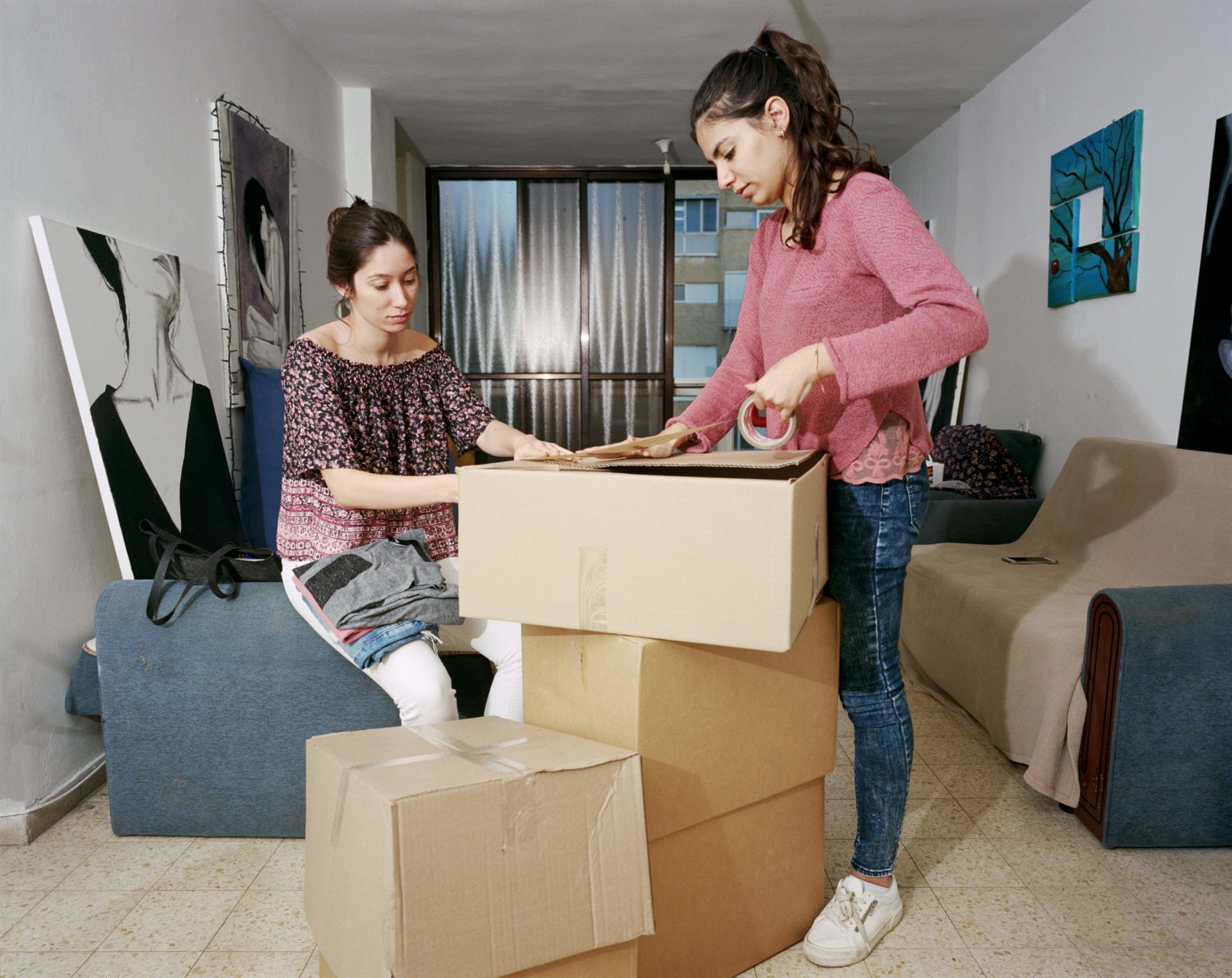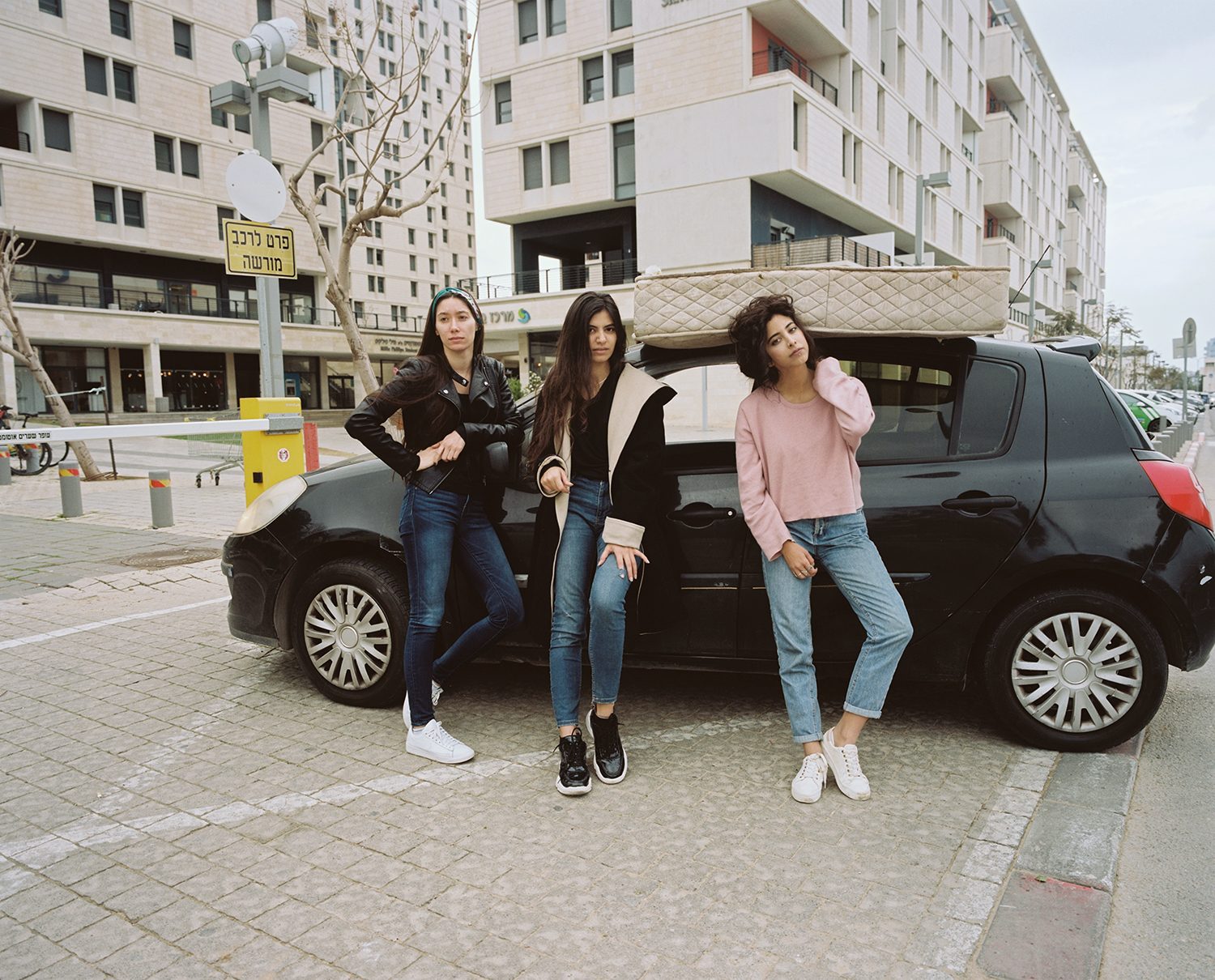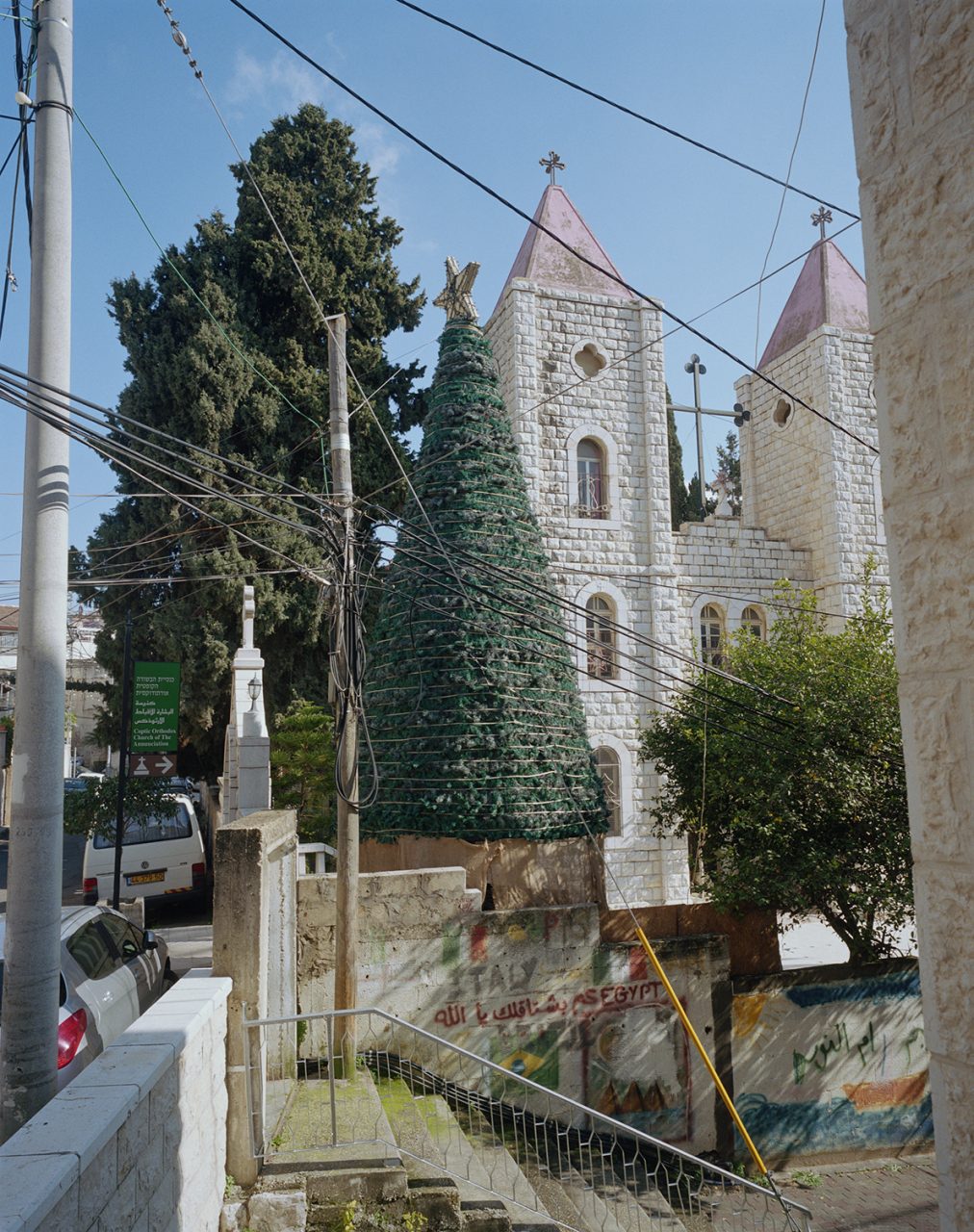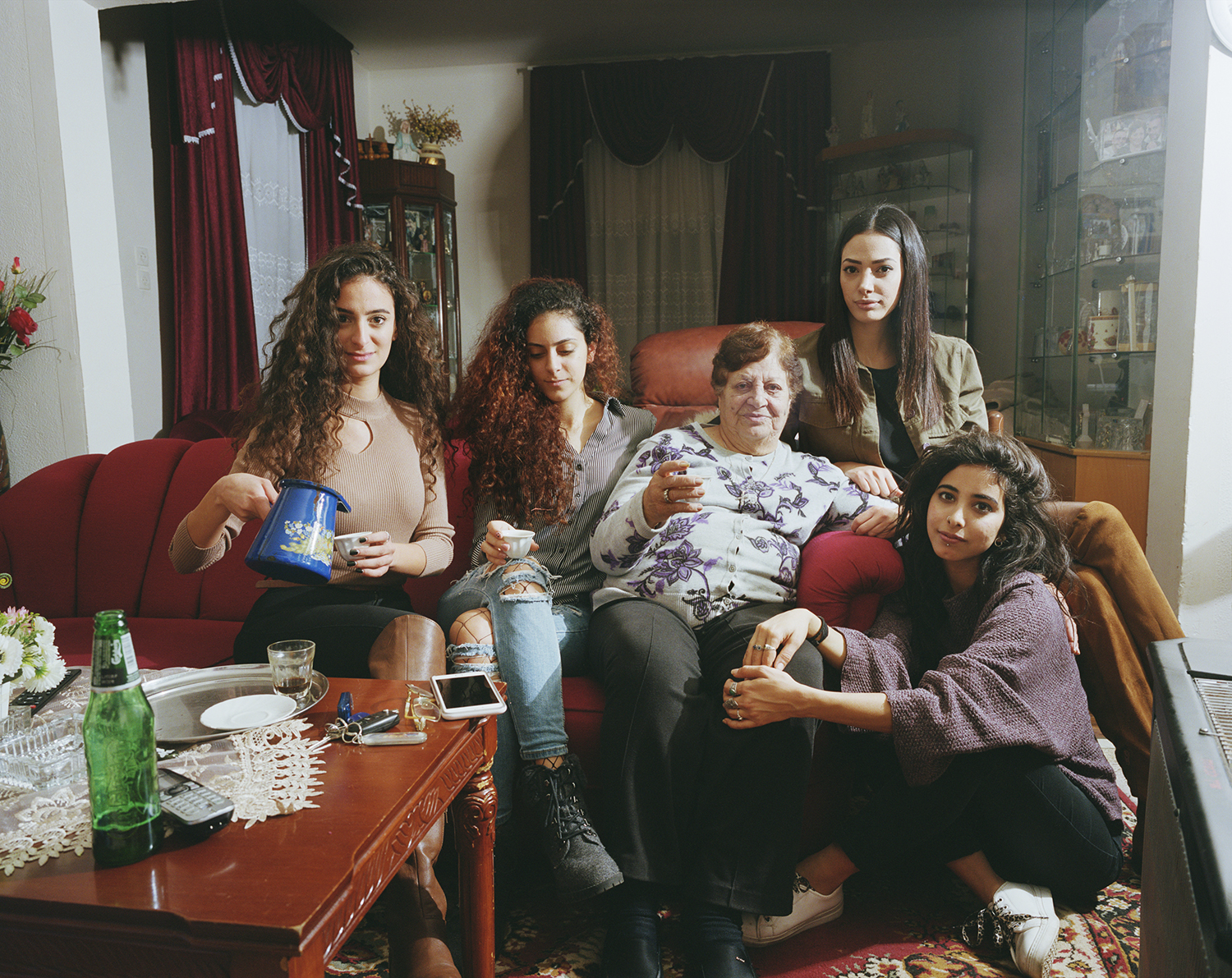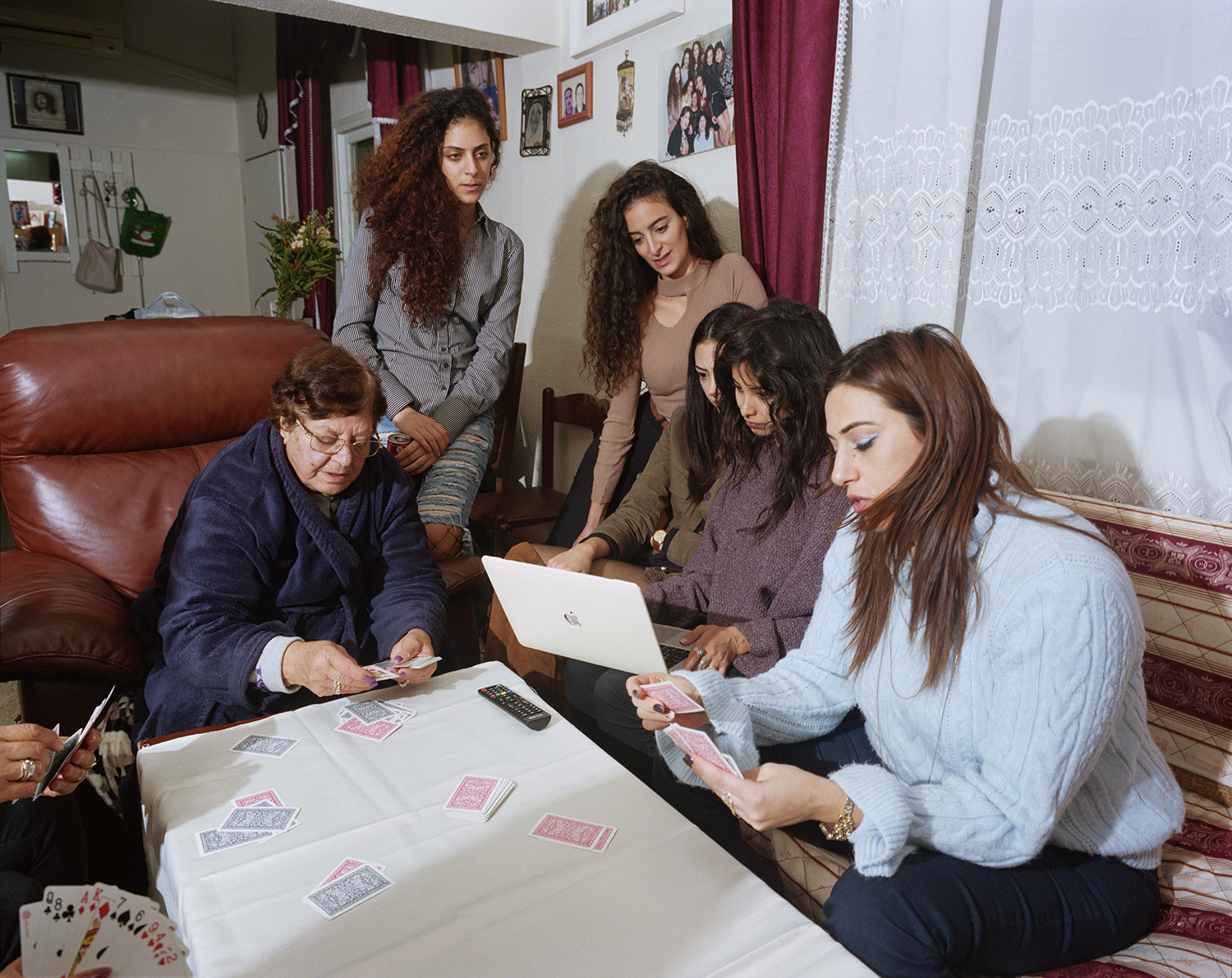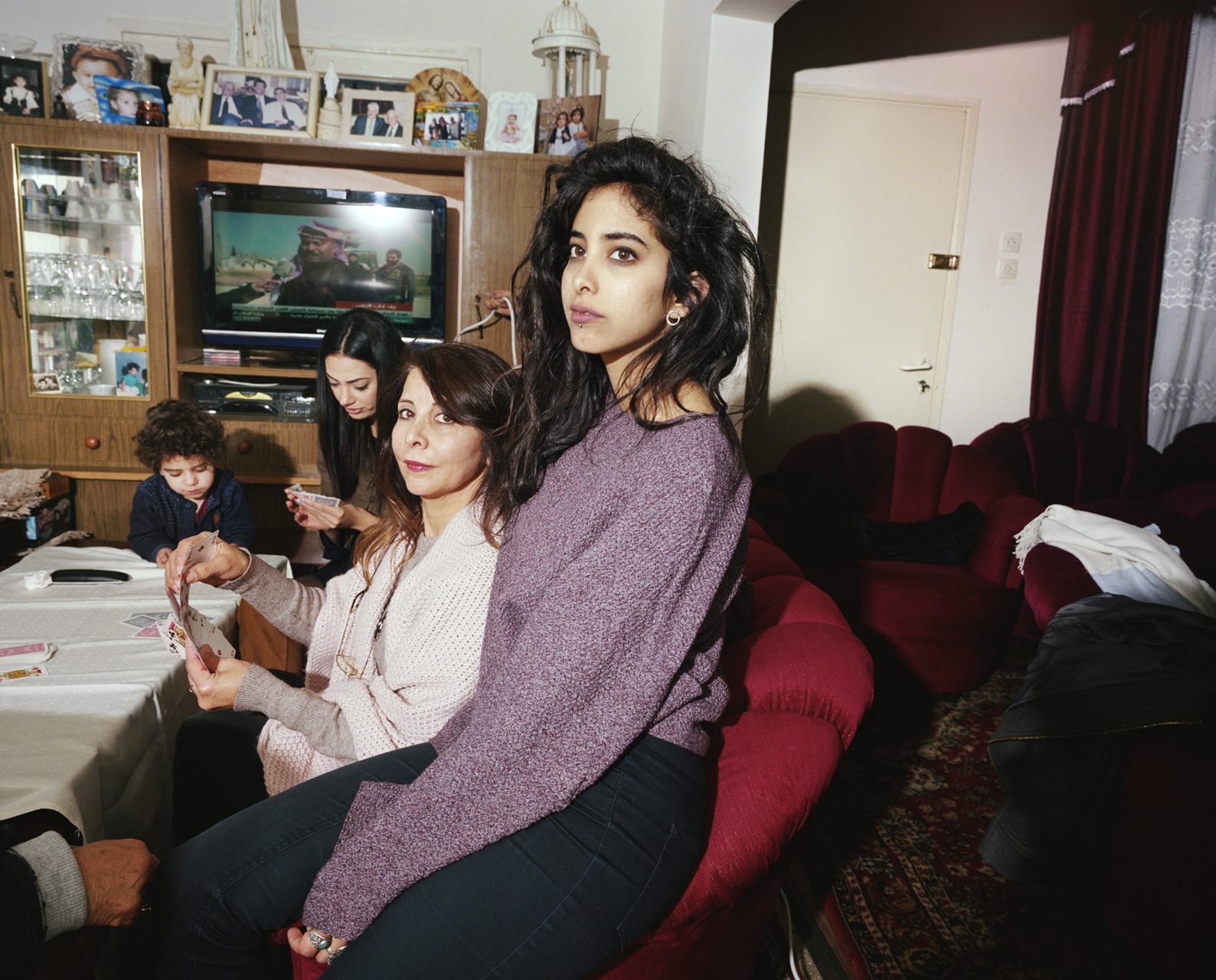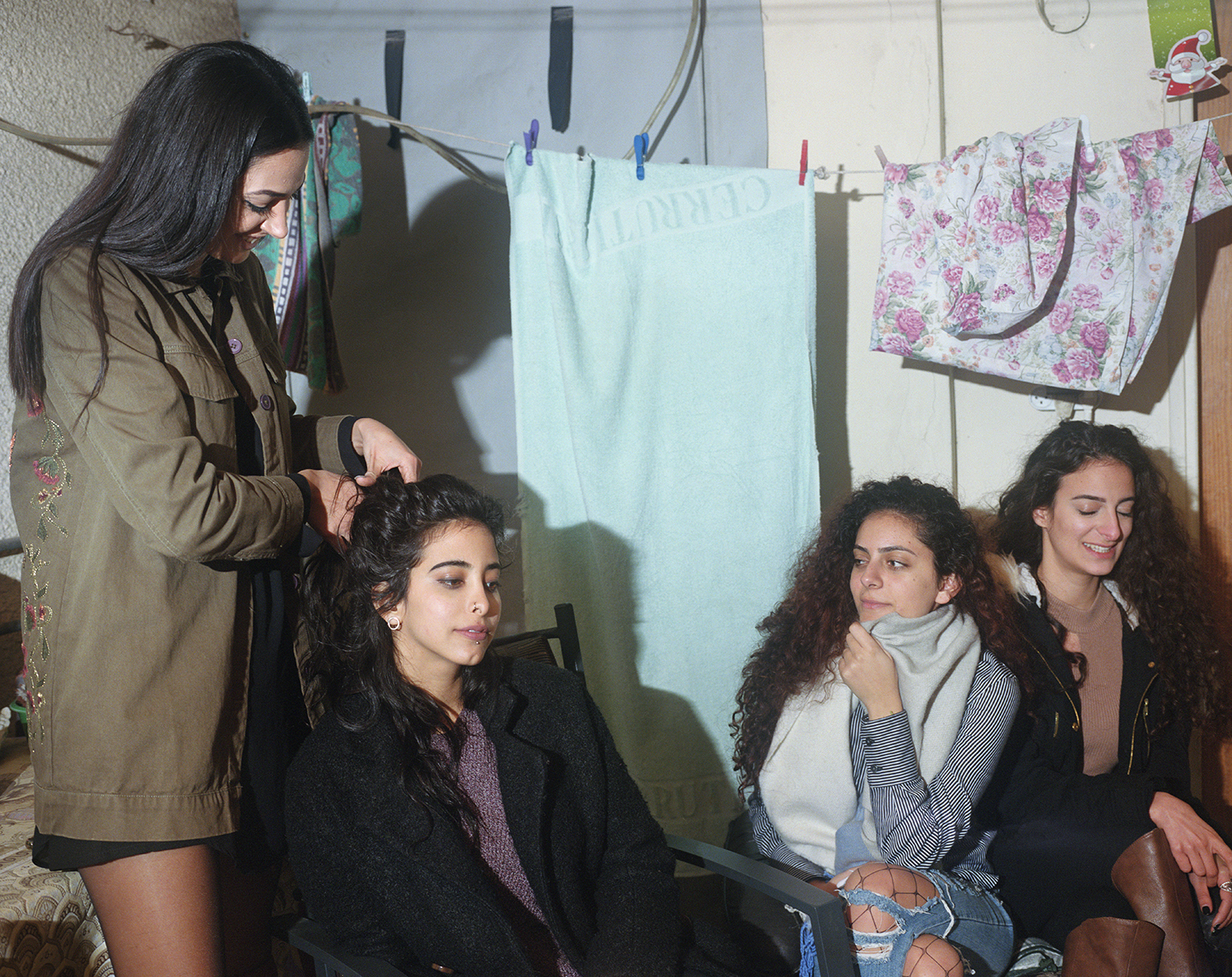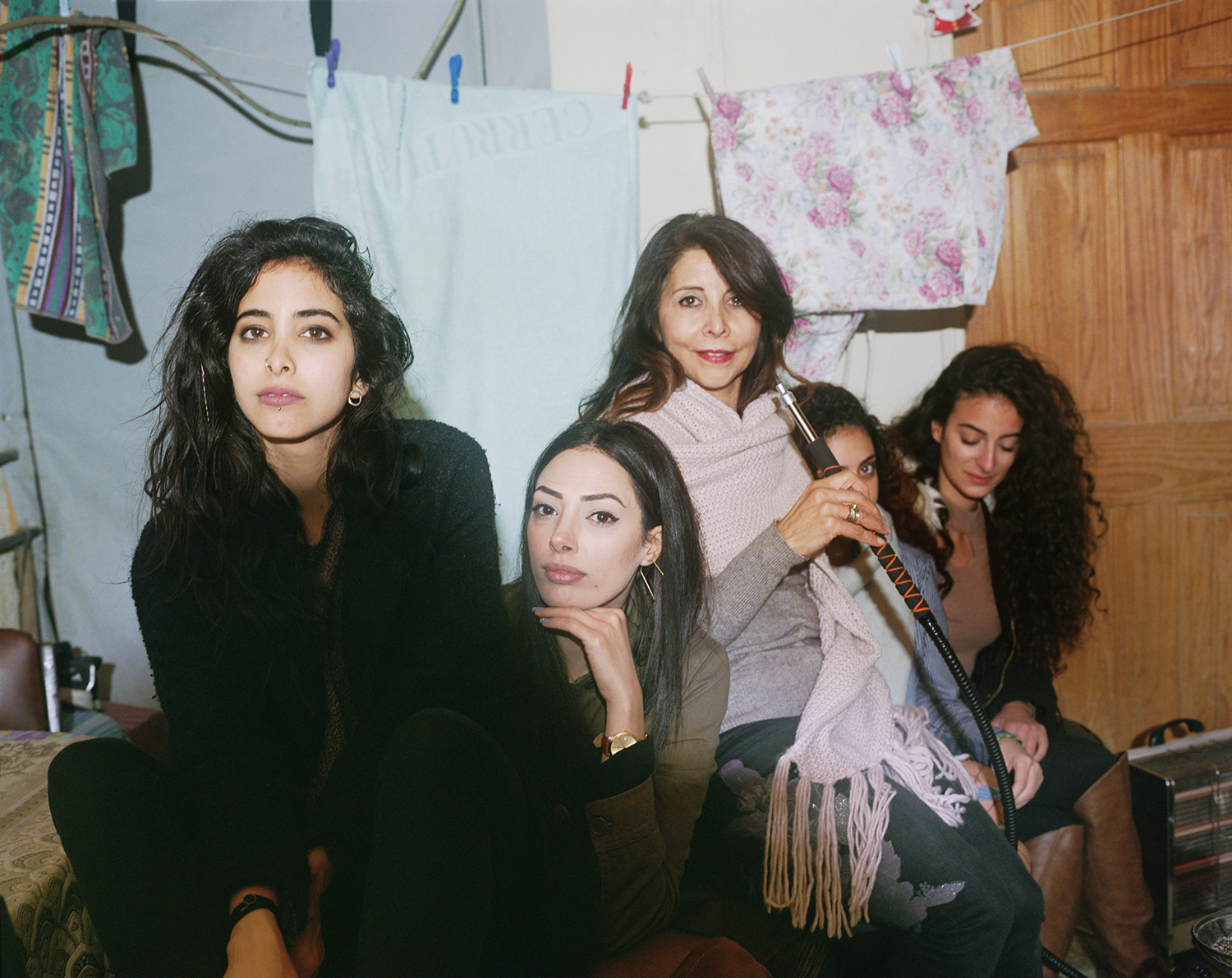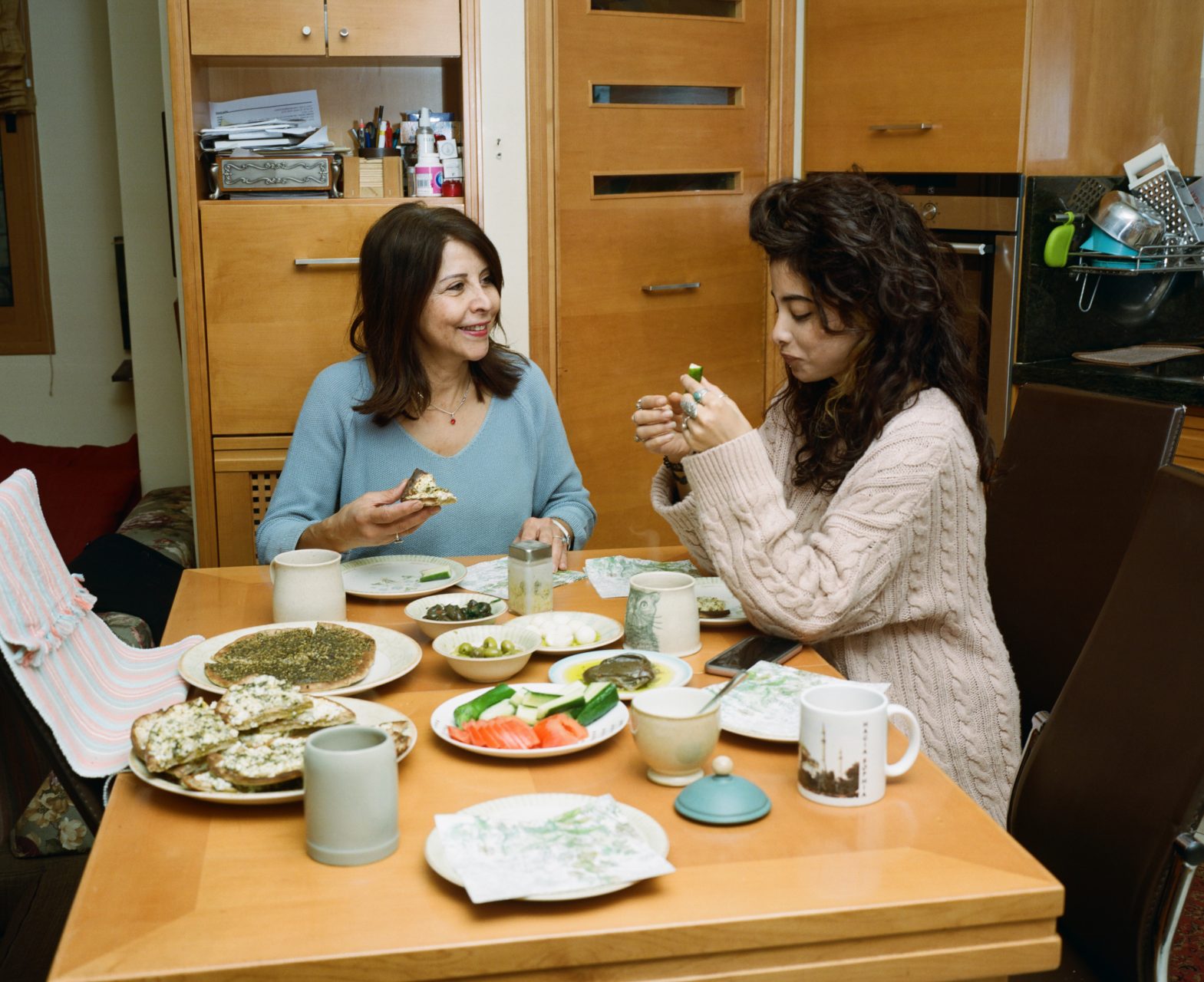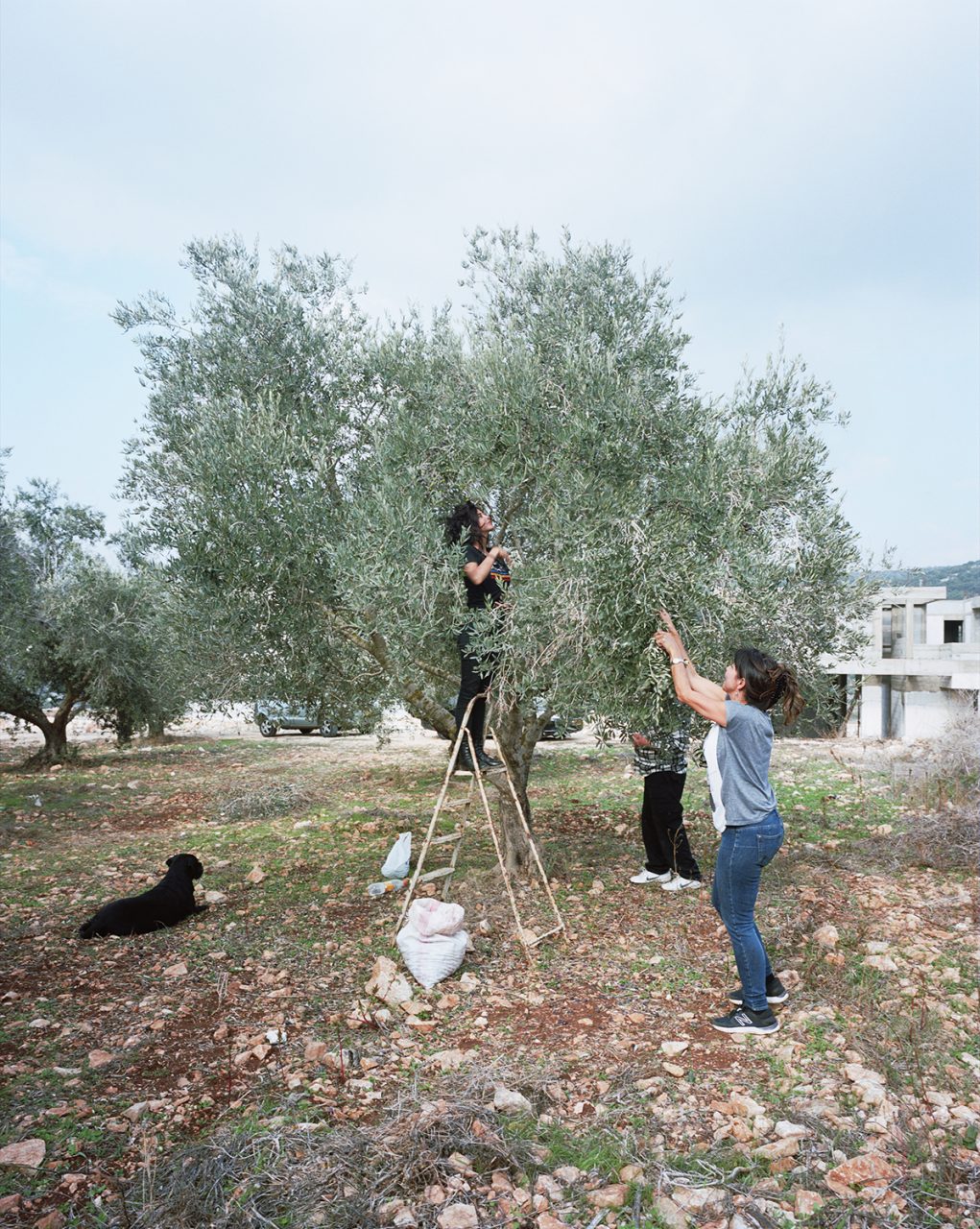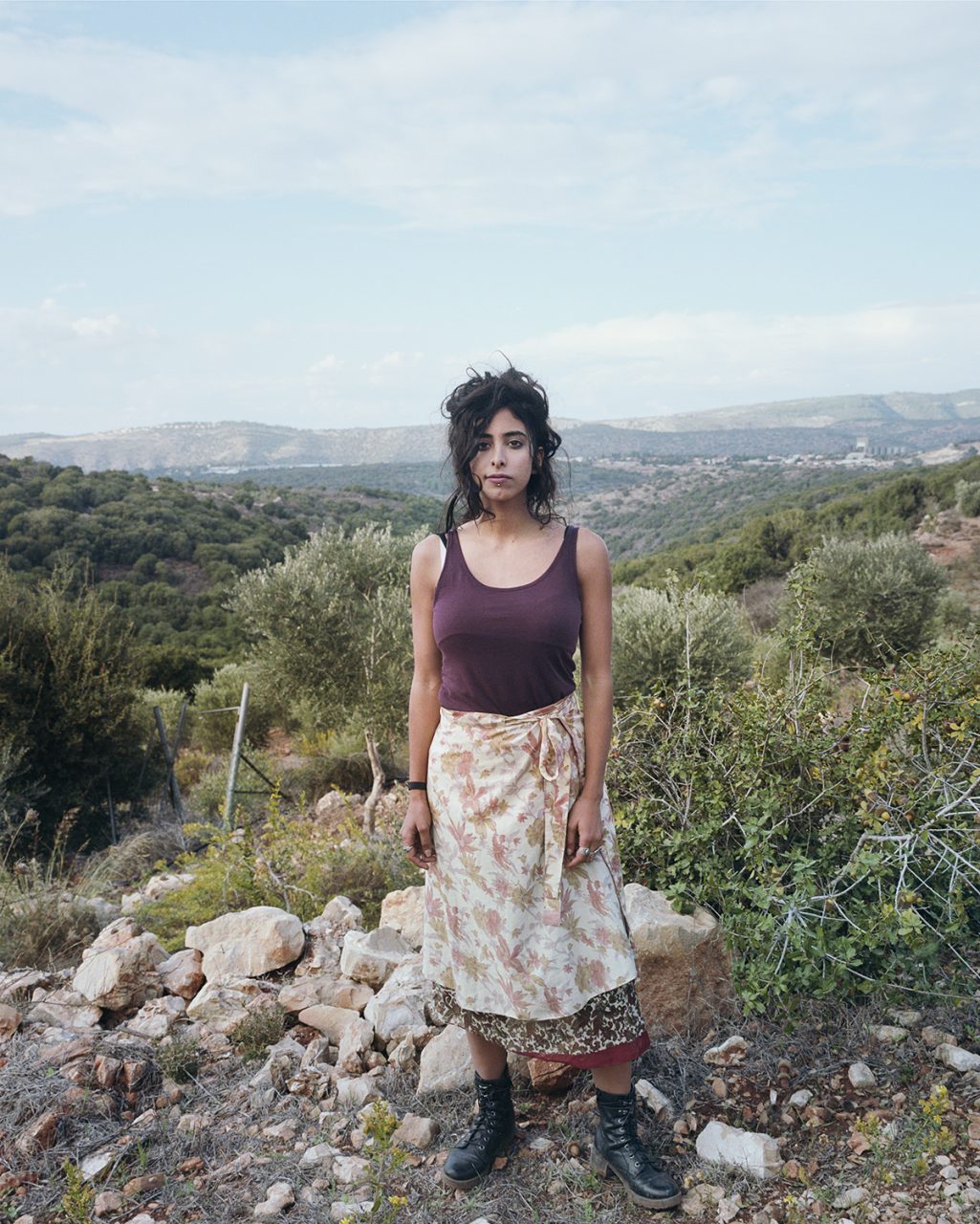A Place of Our Own(2014-2020)
مكانٌ خاصّ بنا מקום משלנו
I met Samar in 2014. She had just graduated from the Film and Television Academy at Tel Aviv University, and was living in Ramat Aviv, a Jewish neighborhood where the university is located and where I live. Samar introduced me to her cousin and her friends; that’s how this six-year project began.
Samar and her generation are part of a recent surge of Arab female students attending Tel Aviv University. This university was built on the ruins of the Palestinian village of Sheikh Munis, which – like more villages and refuges in other areas – had been evacuated during the 1948 war of independence for the establishment of Israel. The Palestinians refer to this event as the Nakba (catastrophe), a term not recognized by the government and official institutions of Israel.
It was refreshing to hear Arabic being spoken in my neighborhood by a new generation of young and self-confident women, so different from how they are portrayed in the media. Most of them come from Arab-populated cities and villages in Israel. Their families and communities are mostly protective and conservative. At the same time, speaking Arabic in the streets rather than Hebrew attracts stares. The presence of these young women in my own neighborhood fascinated me.
When I was growing up, I lived with my family in many parts of the world, which left me with a feeling of always being different. Therefore, it’s no coincidence that most of my projects are about identity and culture, and my work deals with the notion of femininity, groups, and communities of women of different ages in Israel.
So it made sense to engage with these young Palestinian women in my neighborhood, portraying the lives of these proud women in their late teens, early twenties, living alone, away from home.
I admired Samar right away, for her looks and her smart and strong opinions. Samar agreed to cooperate with me although she was somewhat ambivalent about my intentions.
We arranged to meet at Tel Aviv University Dormitories – Broshim Campus, in Ramat Aviv. It was important for me to do our first photo shoot there, both of us being aware of the political history of the place without needing to talk about it.
Samar arrived with her cousin and two close friends. The resulting photograph, the one with them sitting in Samar’s green car, captures the young women’s current state of happiness. They look confident about the future.
That’s when I knew my project had started. It was just a few months before the war in Gaza began…
A Place of Our Own (2014-2020) depicts the everyday lives of Samar from Nazareth, her cousin Saja (studying psychology) also from Nazareth, Majdoleen (studying architecture) from Kafr Kanna, and Aya (studying social work and gender studies), from Kafr Qara. I followed them from the time they were students at the University of Tel Aviv until their graduation and after. They were between 19 and 24 years when I met them. (As stated above, Samar had already graduated when I met her.)
We would meet every few months, usually following lengthy attempts by me to coordinate a meeting. Their schedules, between studies, work, and pleasure were very tight, and they weren’t always in the mood to be photographed. I had a general idea of where the location would be, they would bring a few sets of clothes, and we would start. Sometimes I would photograph them alone, sometimes in pairs and groups.
Samar was my guide into their lives. She and I met regularly in a busy café in Tel Aviv. I showed her the pictures that we had taken, and we discussed what we thought was still missing. We argued and negotiated about the meaning of the images and the project as a whole, and about which images were absolutely out of the question.
I had many enjoyable conversations with Majdoleen as well. She told me about her life and shared what was on her mind. We took photographs in between. I did this too with Aya and Saja, but not as often for they left Tel Aviv a few years after the project had begun.
These meetings and photo sessions were full of humor and discussion. I gained their trust as we learned more about each other. Bit by bit I witnessed more intimate parts of their lives and I also met their families back home.
Through their stories I explored their lives, and bits of our conversations stayed with me for a very long time. Through their posts and stories on Instagram and Facebook I built an archive of their own images of their lives, and got ideas about what and where to photograph. The mutual trust helped us through difficult times: the war in Gaza, the bitter and hateful election campaign in 2015 and the 2018 ‘Jewish Nation State’ law… Those were and still are dark moments for all of us.
I watched them grow as they became young adults dealing with issues of career, family, boyfriends, clothes, music and hanging around. I also show what one usually doesn’t see: the freedom and joy in their daily life. Although the reality and complexity of this country intrude in their lives continuously, at the same time it is bonding them even more closely; friends become family.
The conversations that appear in the book occurred spontaneously during our meetings. Some I would write down while we talked, some right after the meetings, some years later. All the texts have been checked and approved by the young women.
This project does not claim to faithfully document the lives of these women, nor does it pretend to show ‘true’ moments. It should be seen as a collaboration between them and me; it shows situations and portraits which are true to their lives, and which we agreed on to portray.
This long and intimate collaboration made me question the place I live in, the historical narrative, the identity and symbols we inherited on both sides. It has revealed a complex and new reality.
I am forever grateful to these young trailblazing women for letting me enter into their lives, and for entering my heart.
